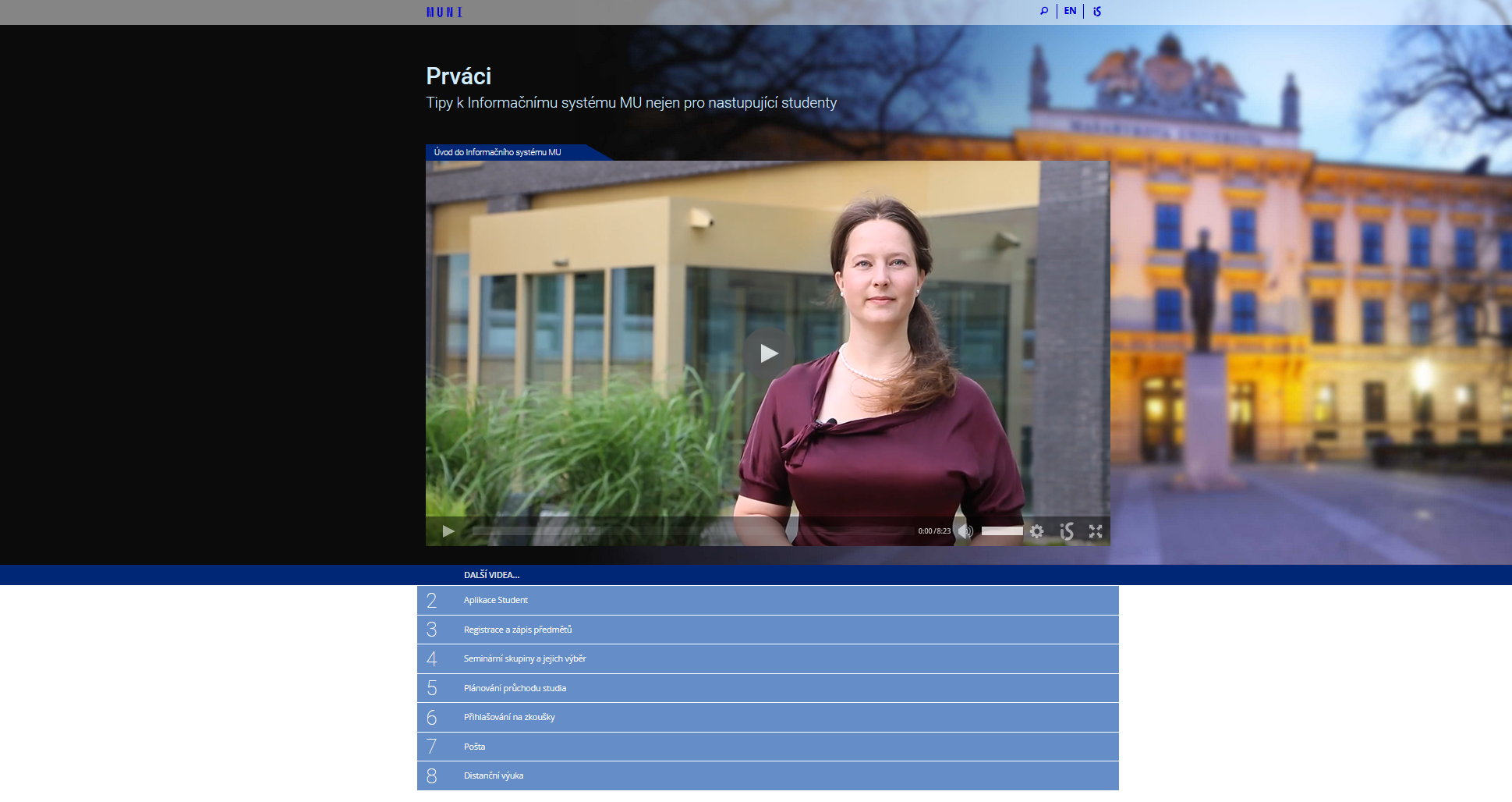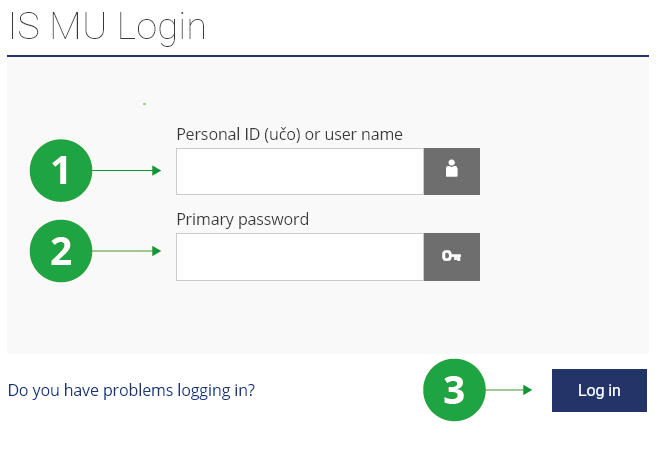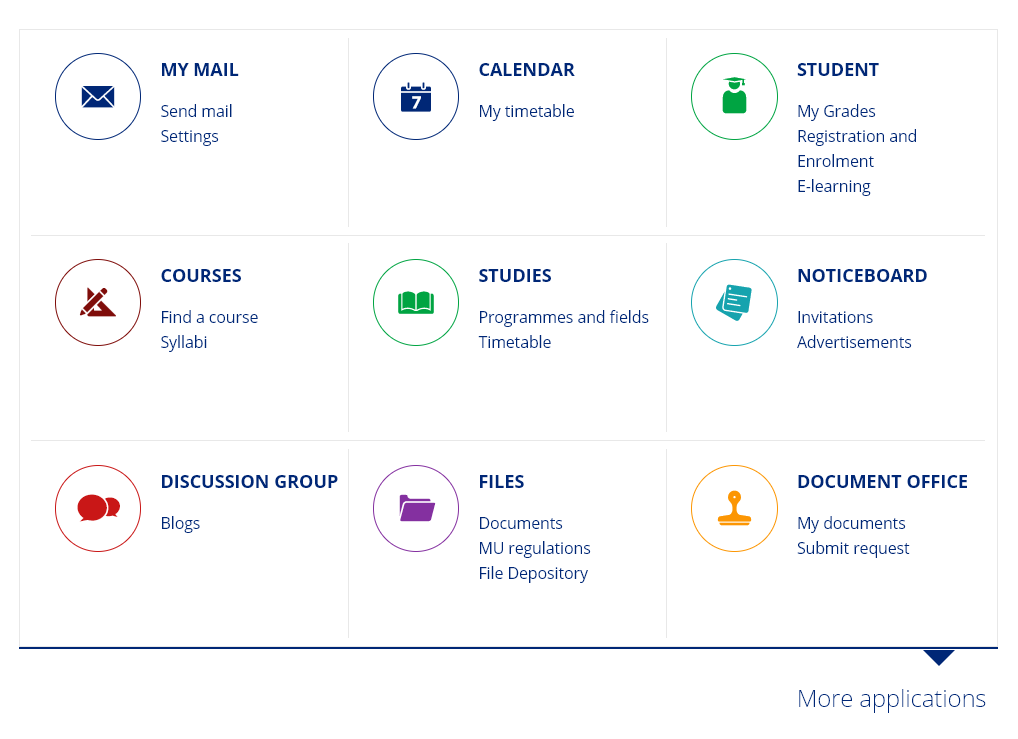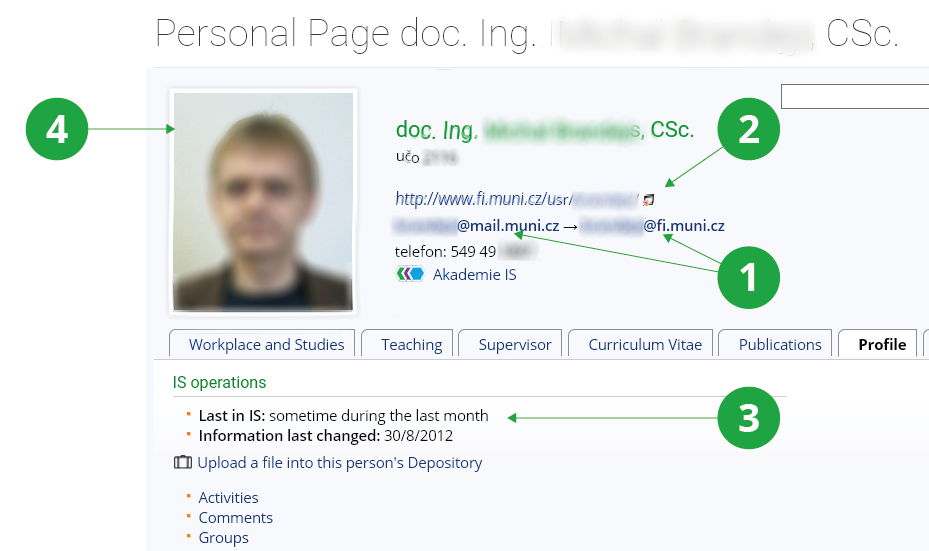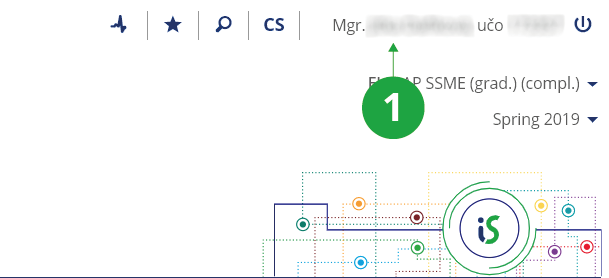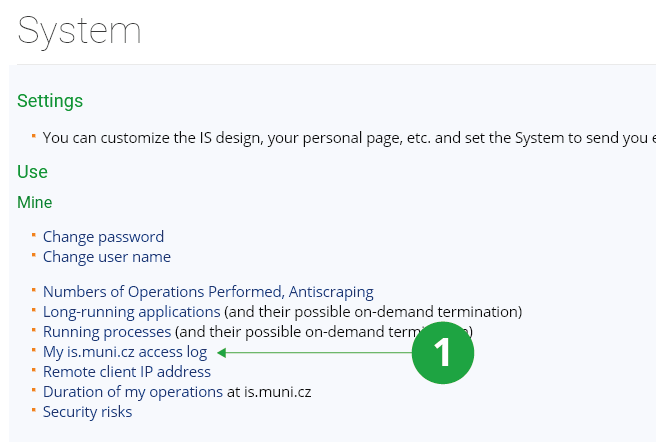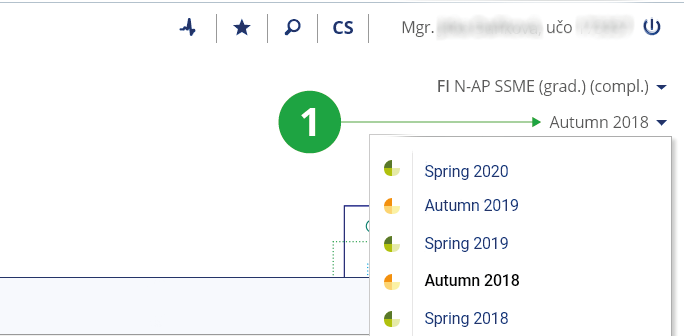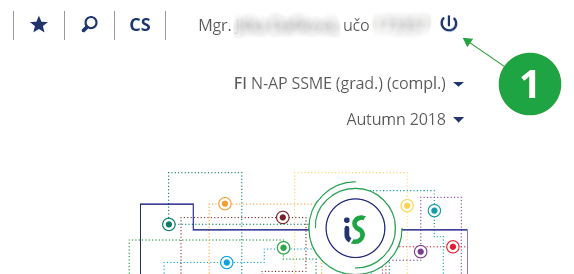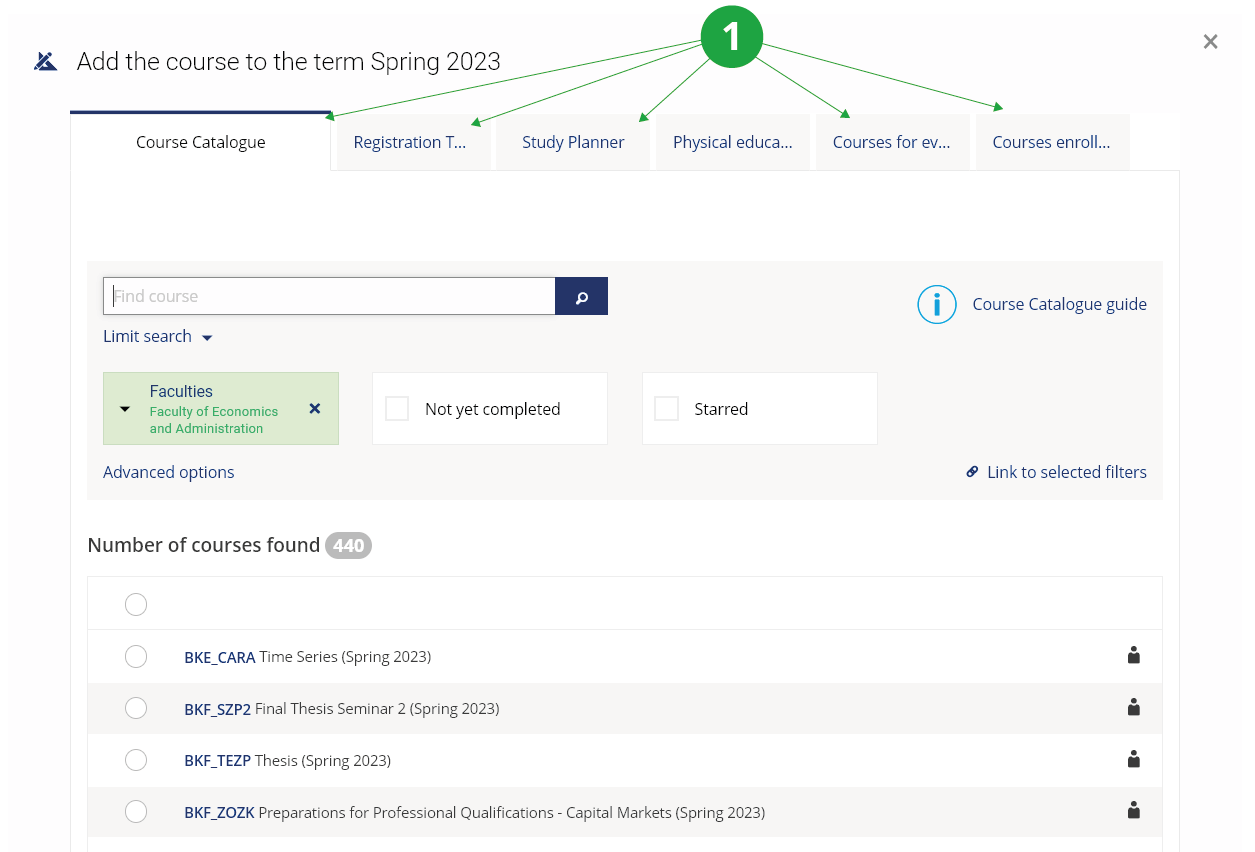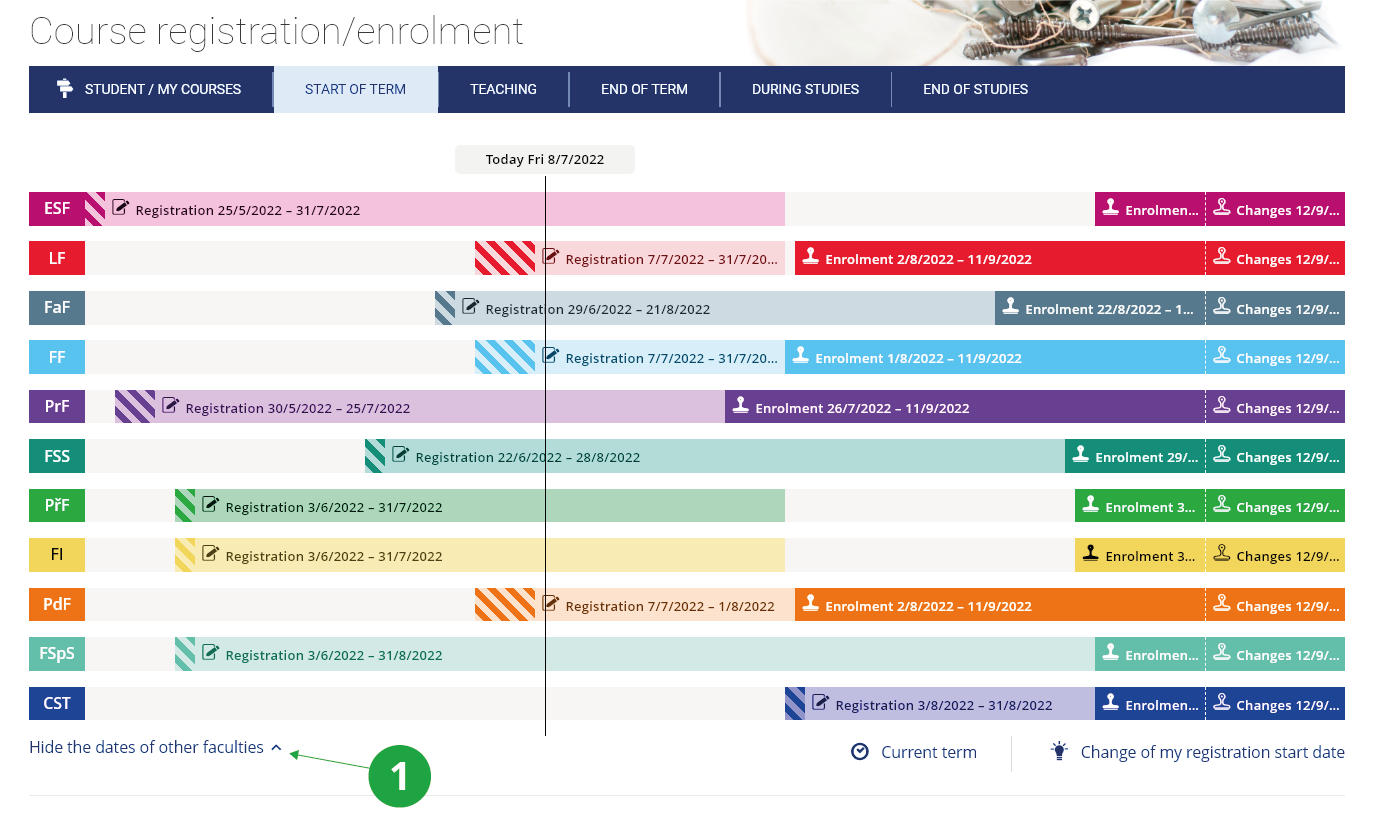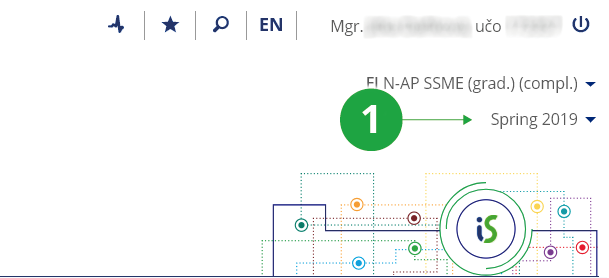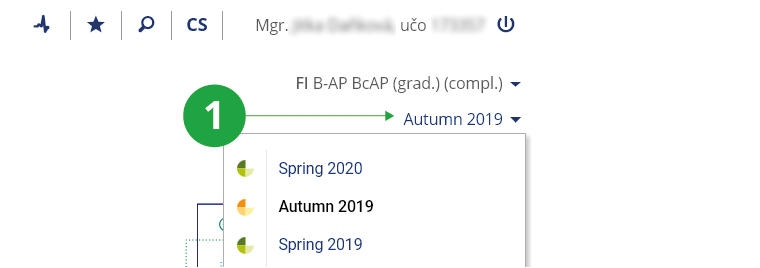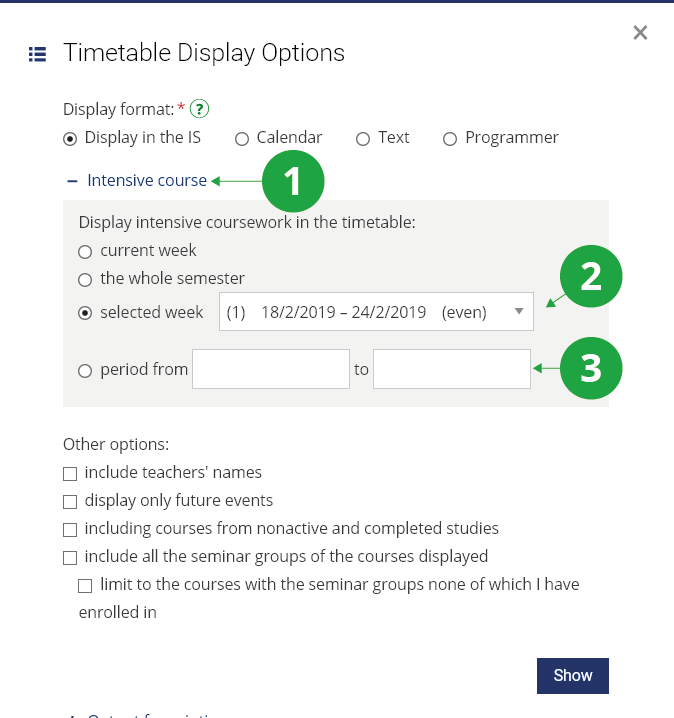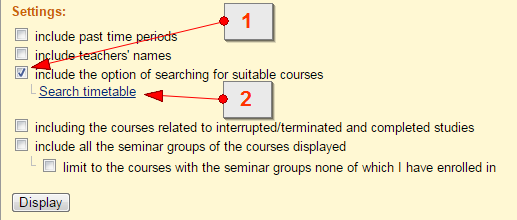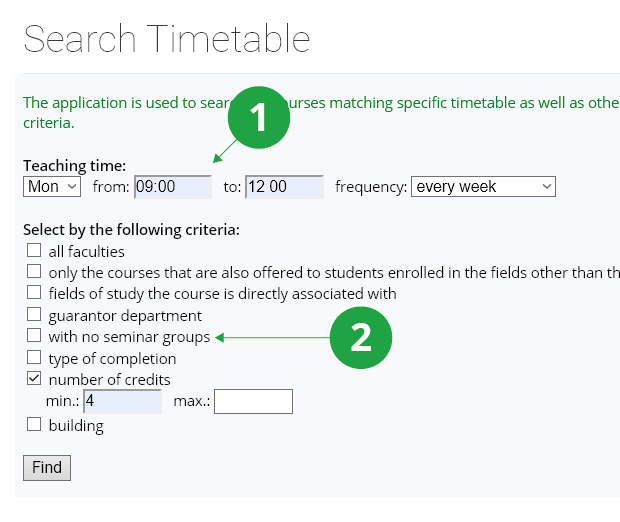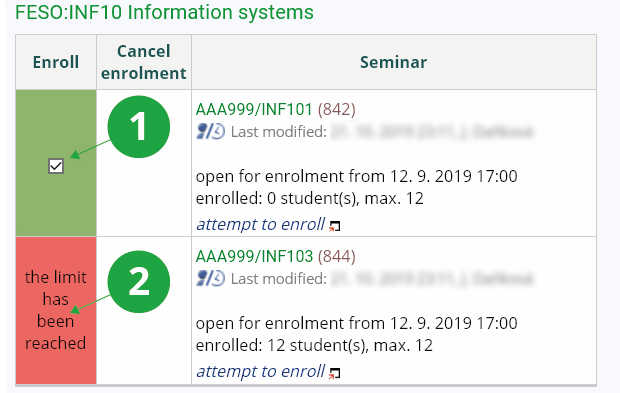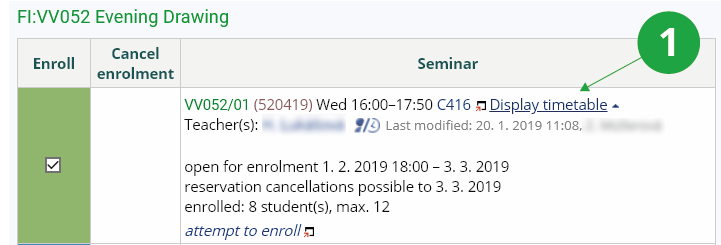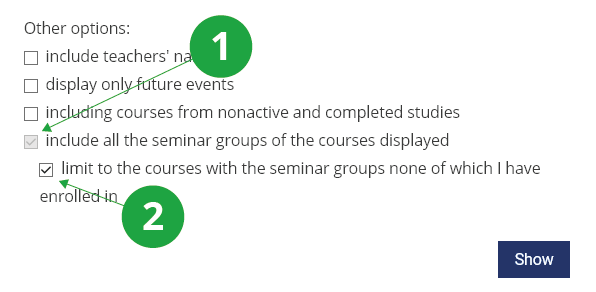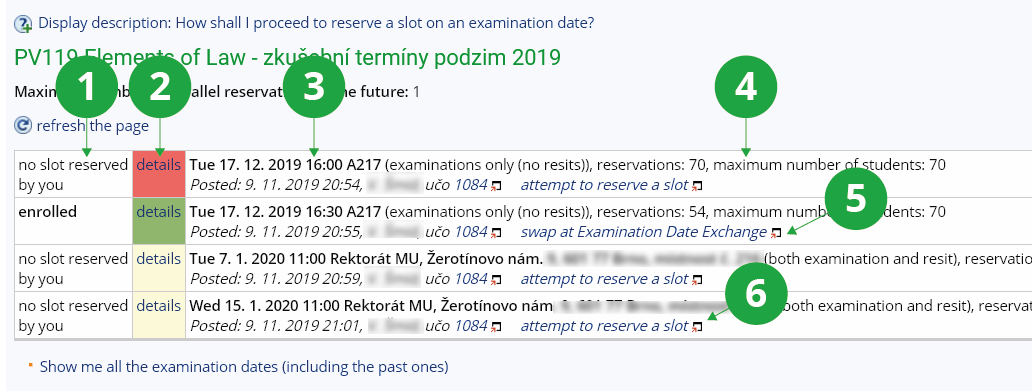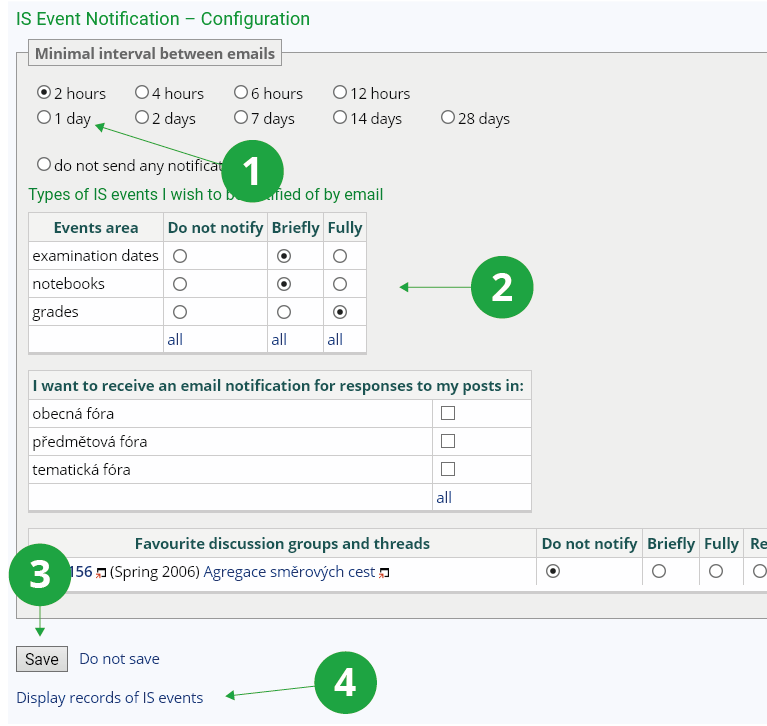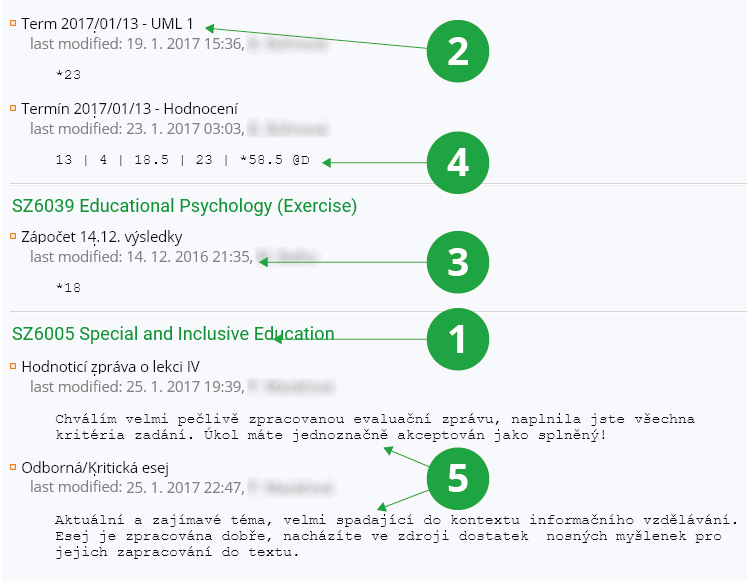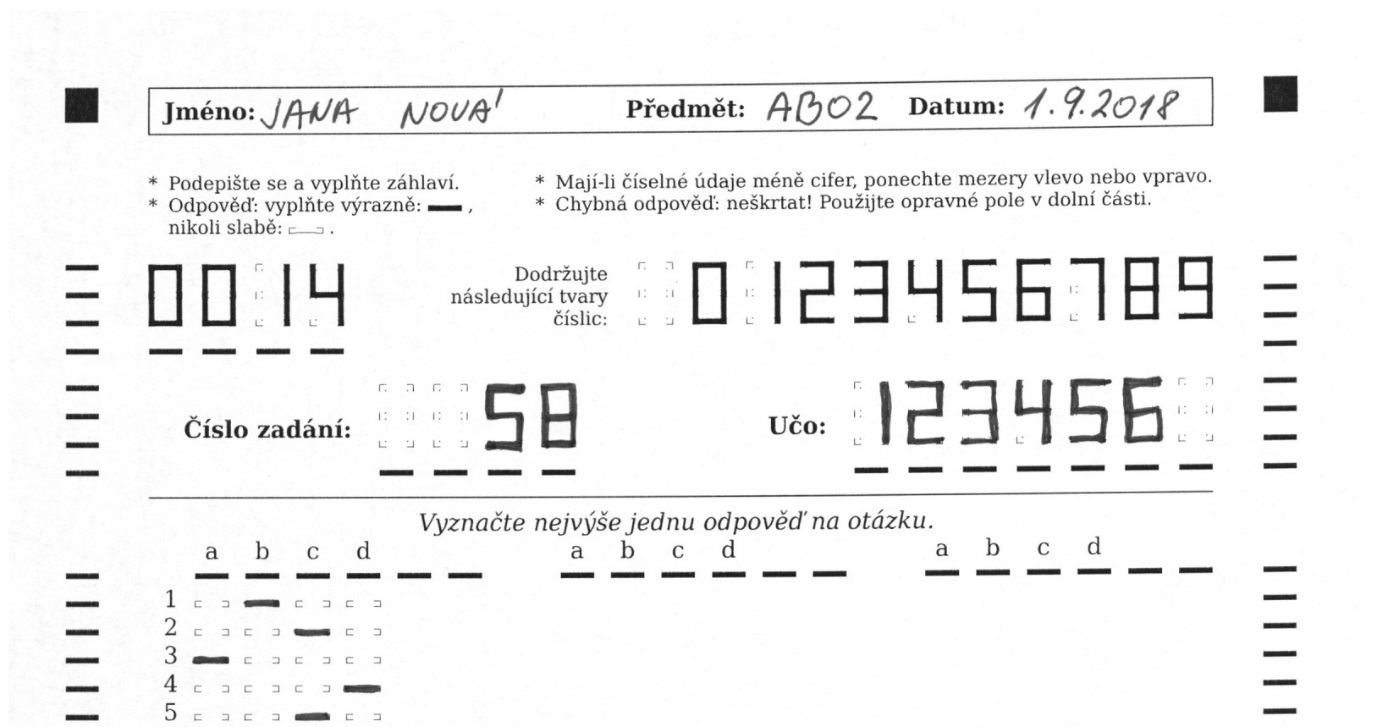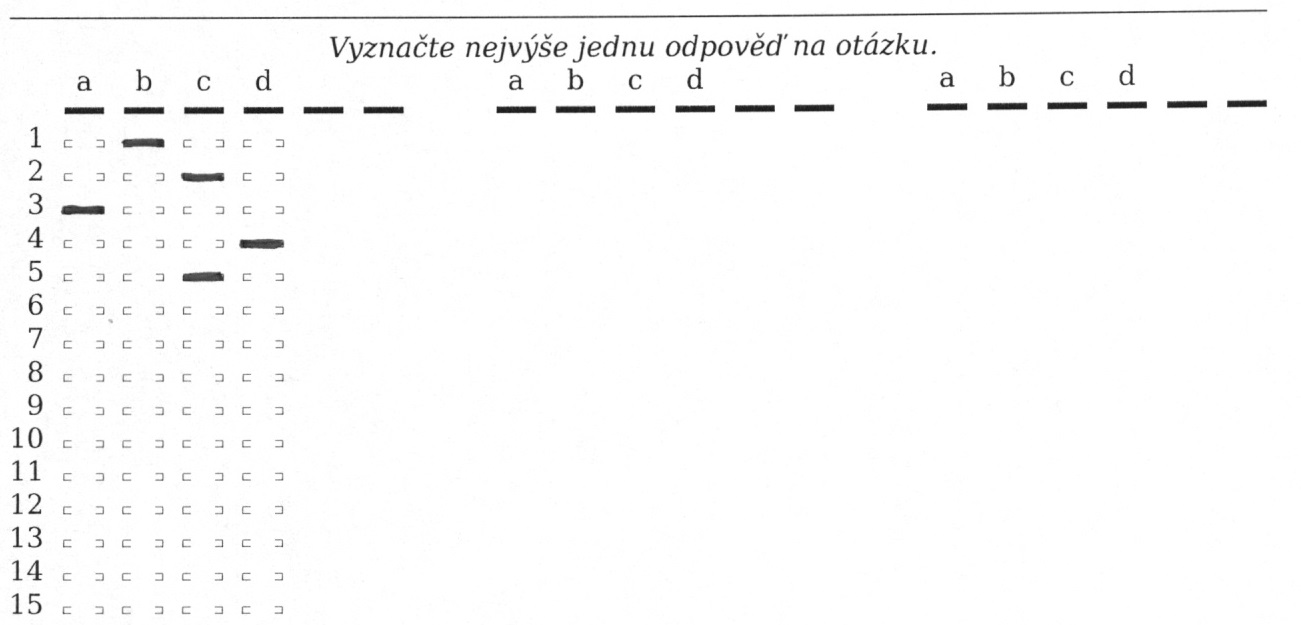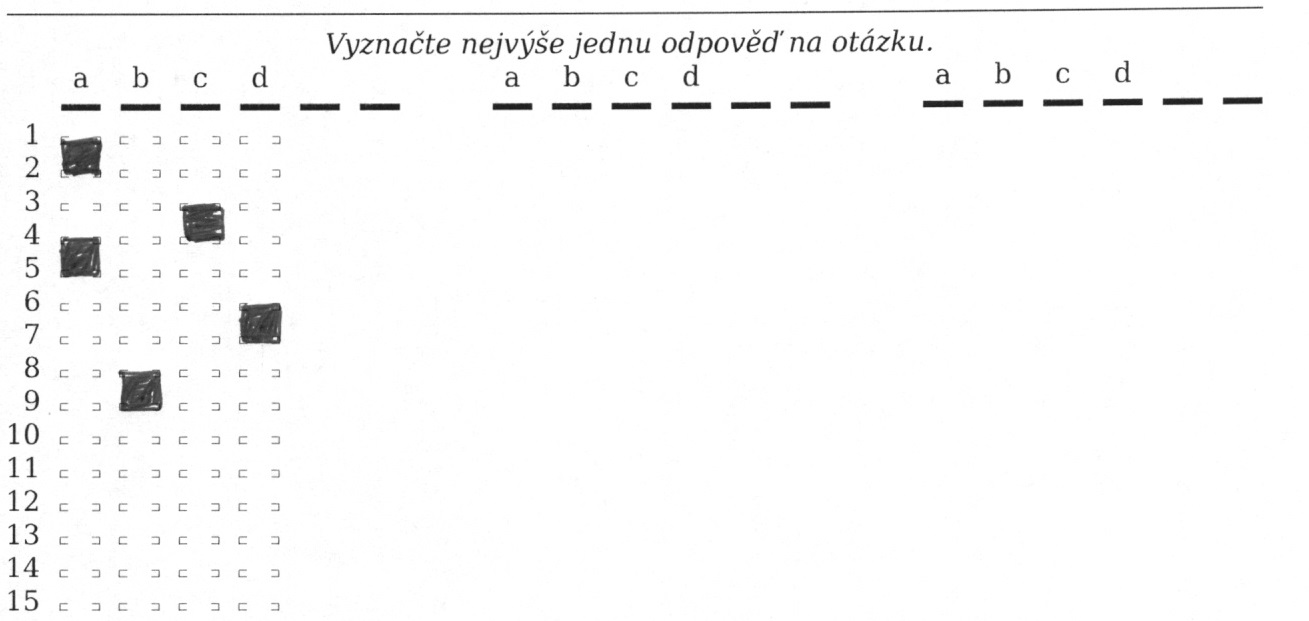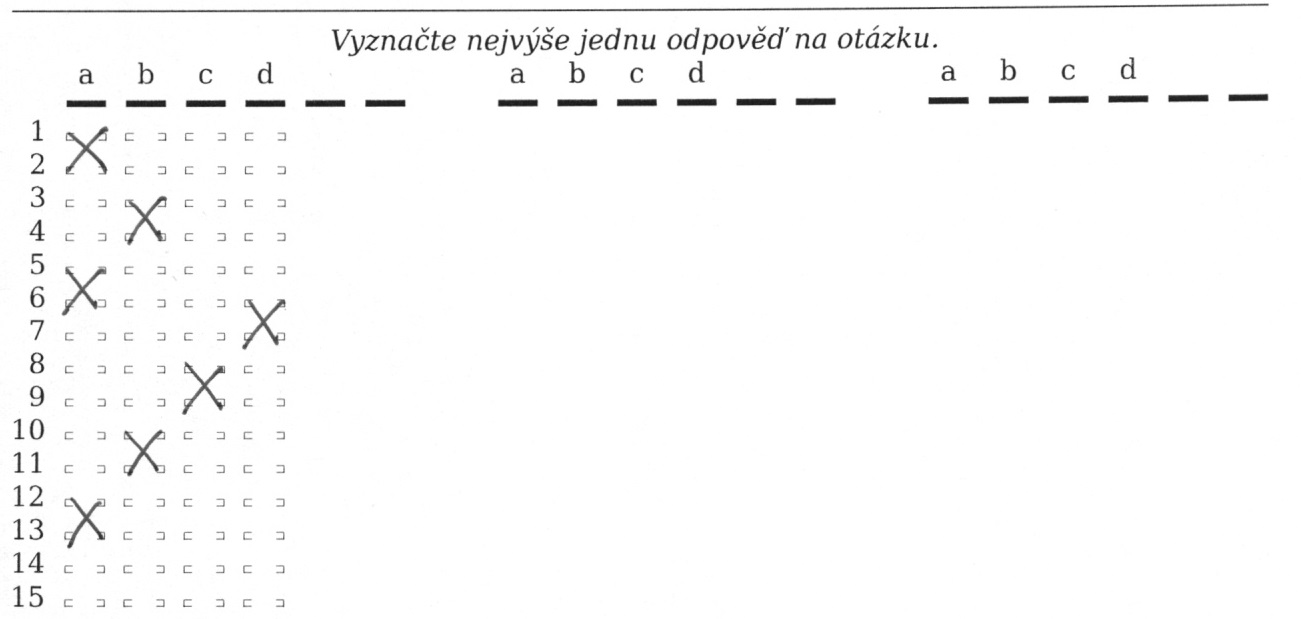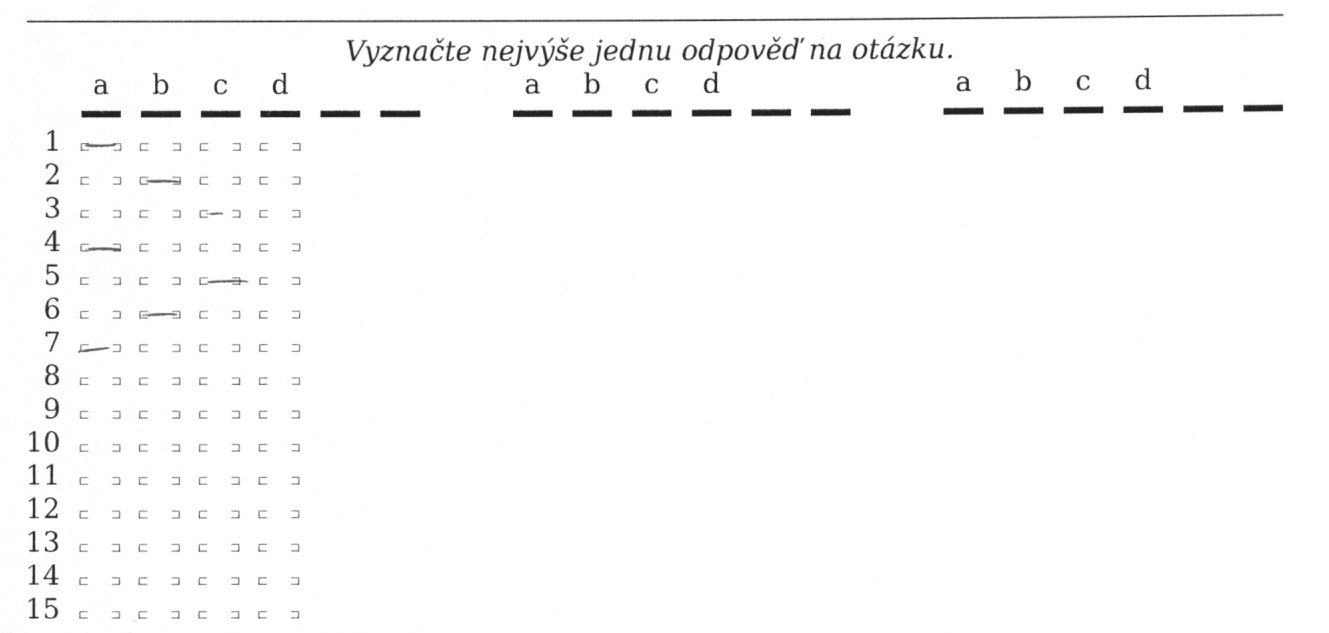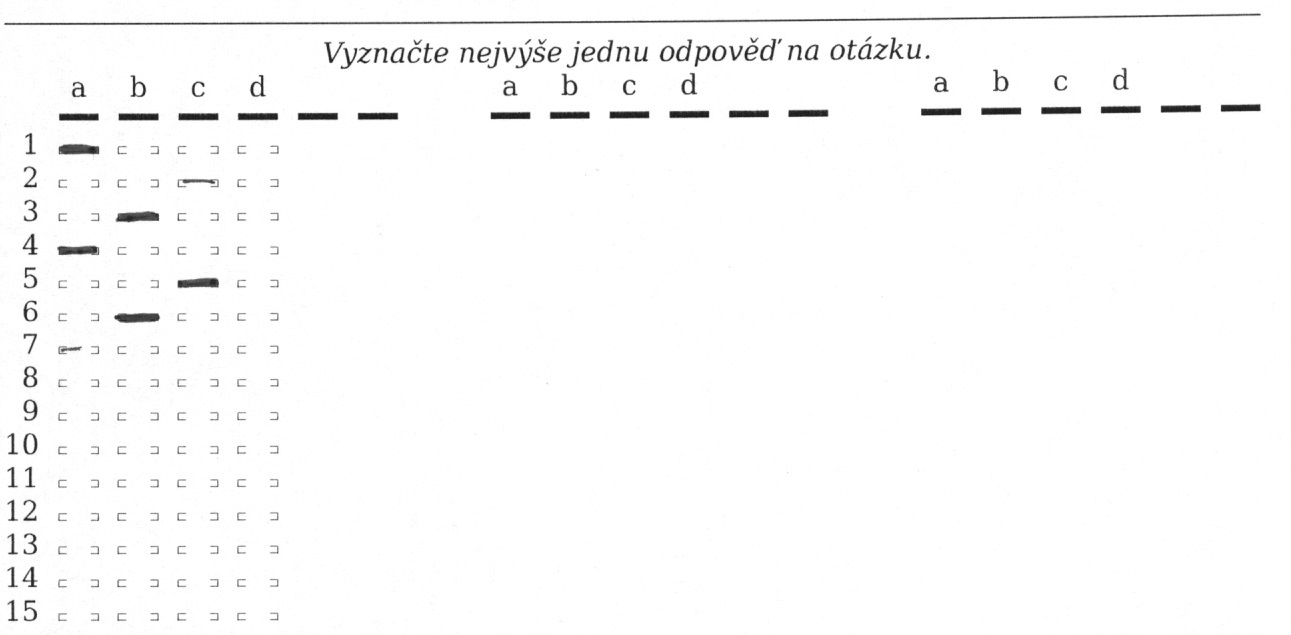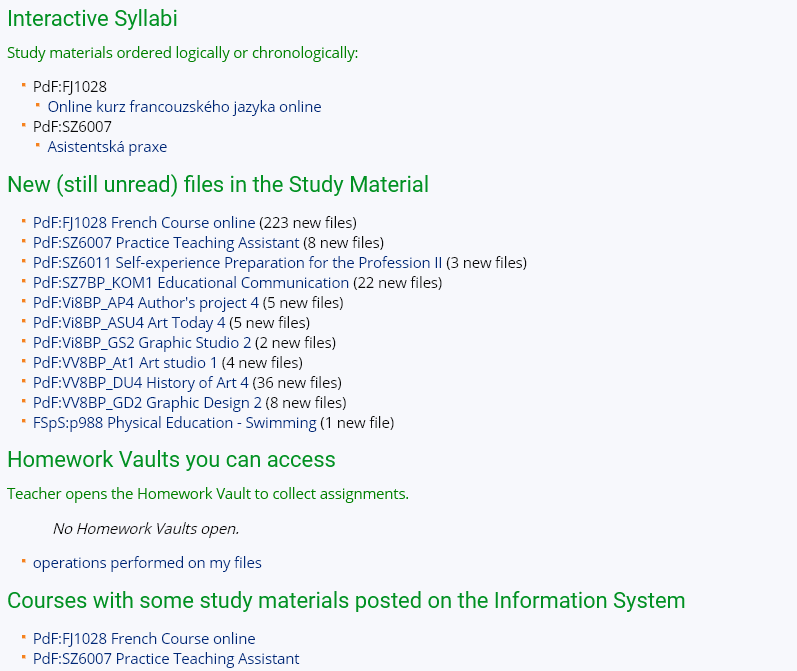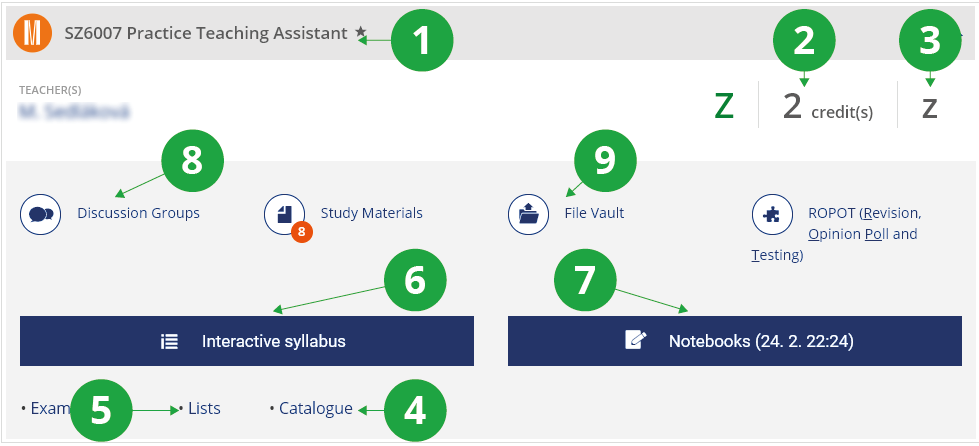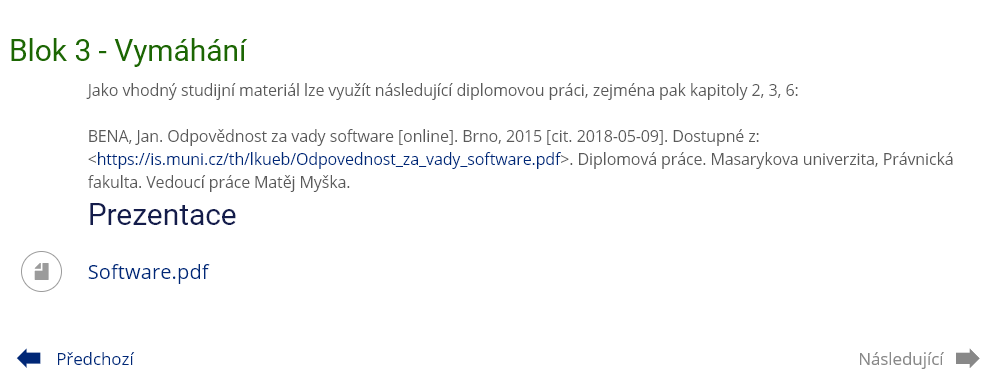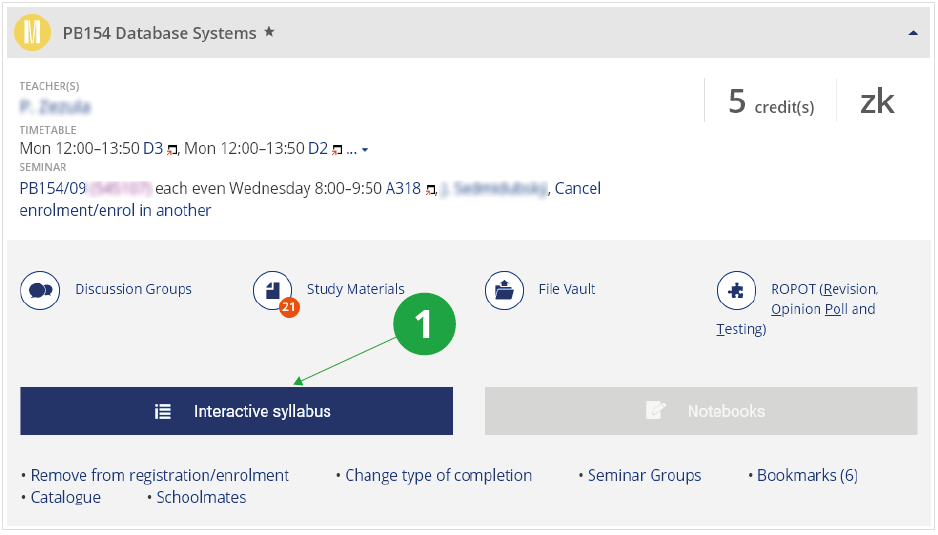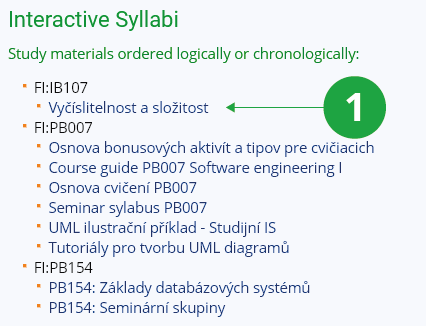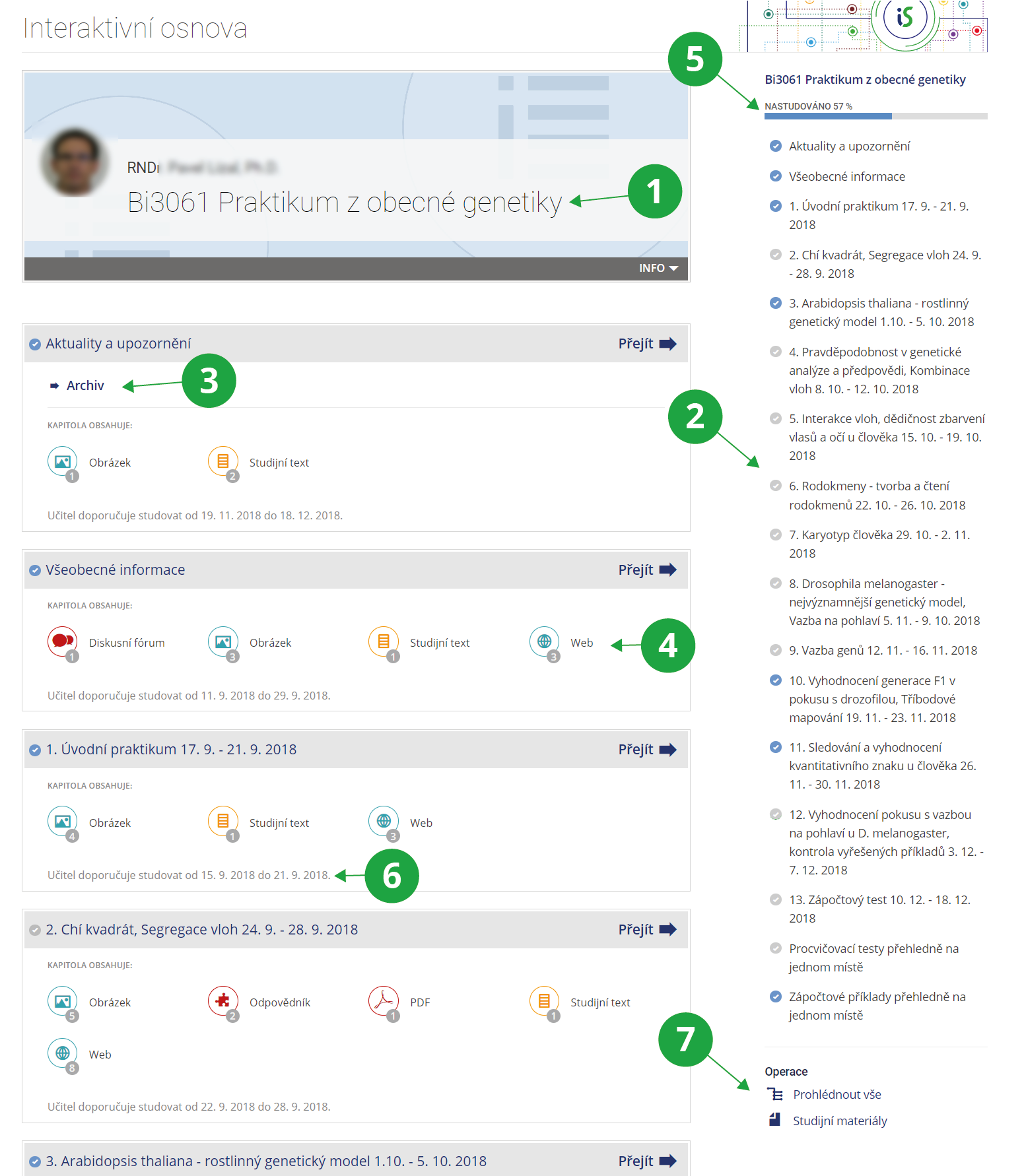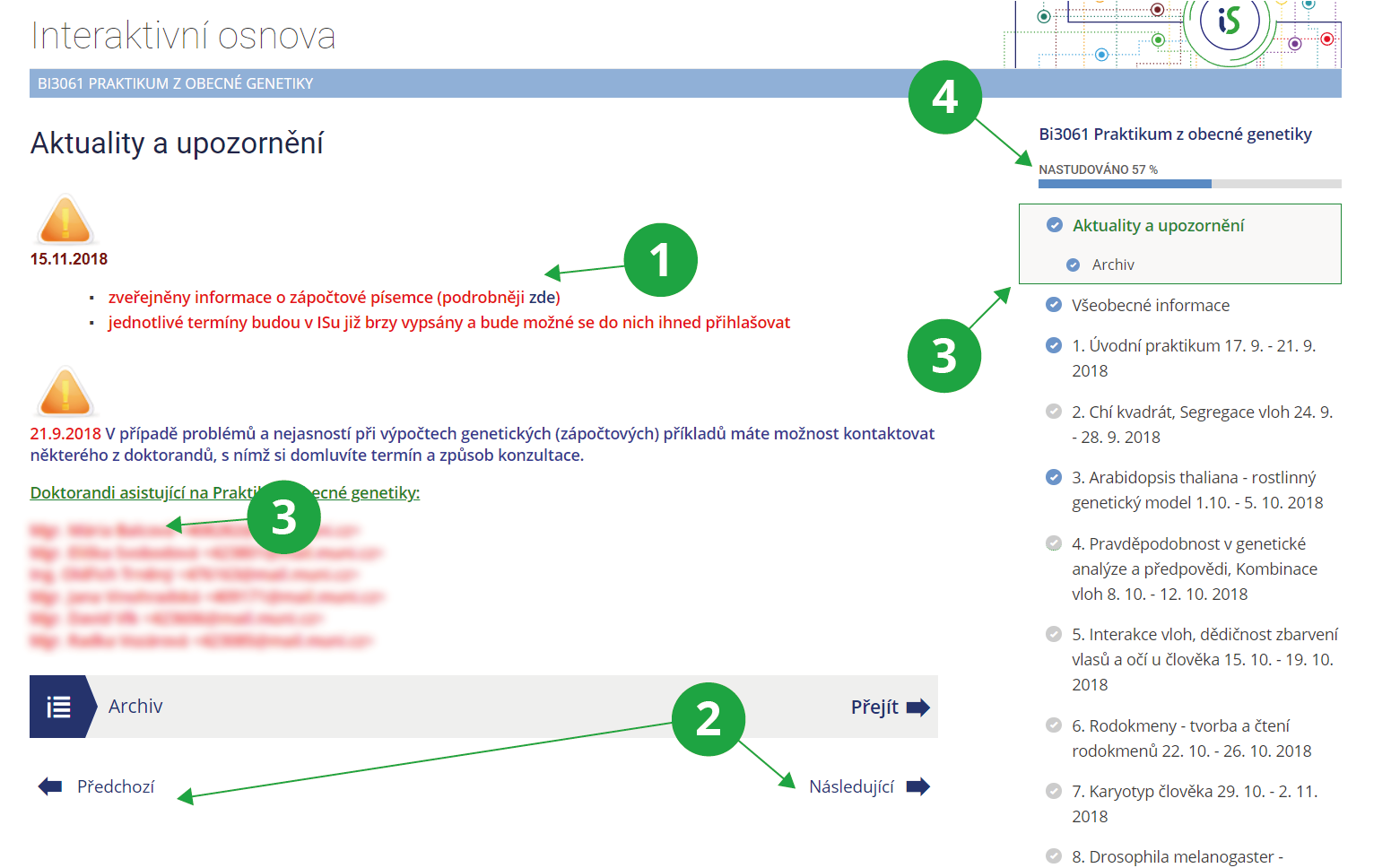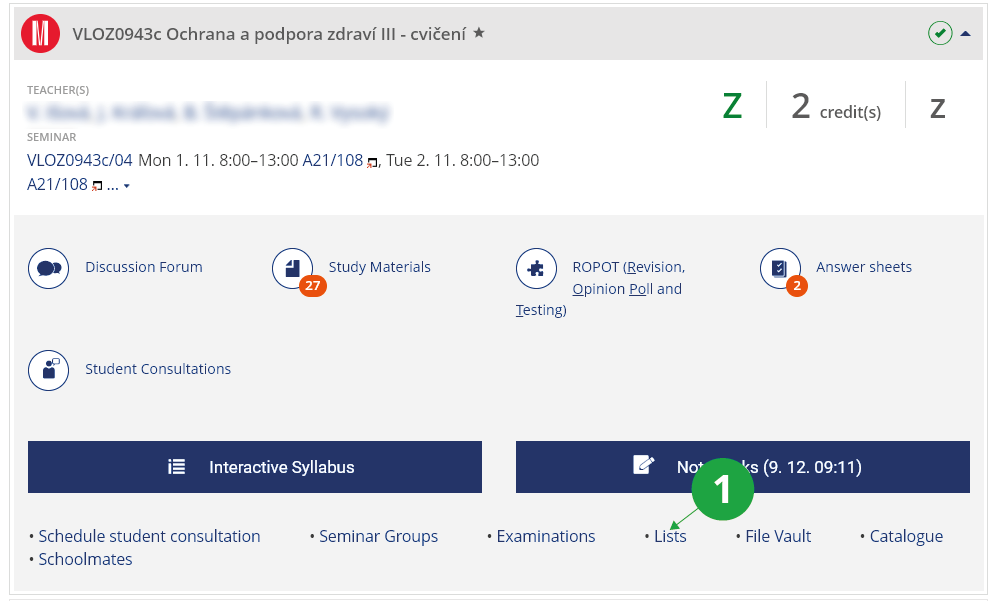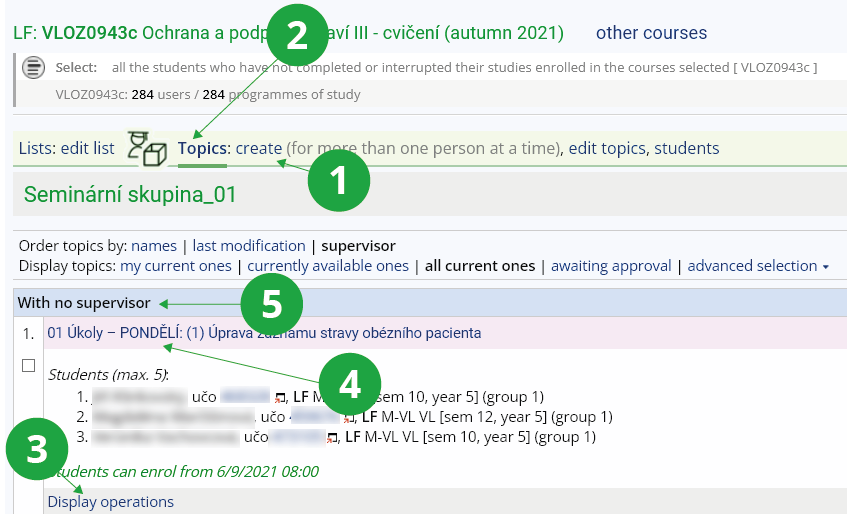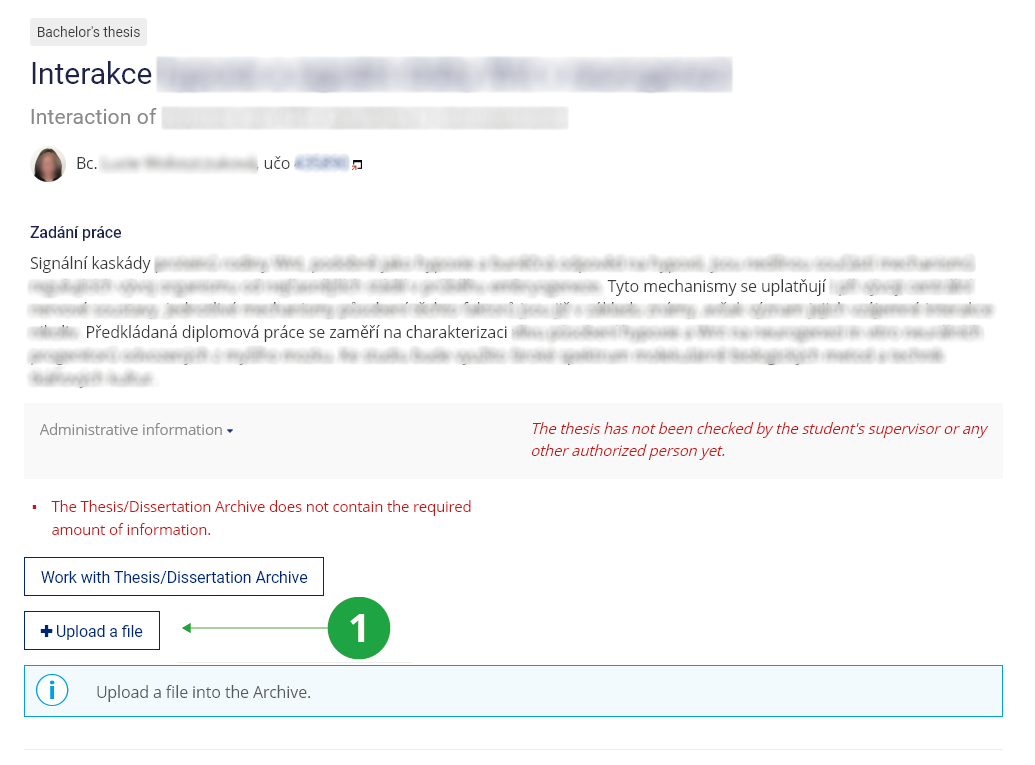The Masaryk University Study and Examination Regulations
- 1.I'm new here, how do I find my way around quickly?
We have prepared a series of video tutorials to help students navigate the system:
Freshmen – Tips for MU Information System not only for incoming students
Preview of the video tutorials page
- 2.I find IS JAMU rather complicated. How can I learn to work with it?
- Please read through this text. While reading, go over the corresponding references in IS to get a better idea of the purposes they serve.
- Important: Make sure you are familiar with the duties you have as a student. These are described in the Help section. To get there, use the
following path:
The Information System Help Student Student's Duties and Basic Terms
- Read through the main page of the Student section:
The Information System StudentTest the individual applications while browsing their help documentation.
- 3.Fundamentals and Information on Accessing the SystemTo log into the system, which you can do from anywhere on the Internet, you need to have your personal identification number (učo) and primary password. To enter the System for the first time, go to is.jamu.cz. You will be prompted to enter your user name (use your personal identification number) and your primary password.
1 Enter your personal identification number (učo) or user name.
2 Enter your (primary) password (not to be shared!).
3 Click on “Log in” to enter the System.
https://is.jamu.cz/ access rights administratorsIf you're having trouble signing in, read the Help. The Information System is protected against overloading by automatic click repeats, in case of exceeding the operation limit the user's access to the system will be blocked. More on Protecting the system from overloading. Orientation in the system is described in this Help. - 4.IS JAMU StructureThe contents of IS JAMU pages as they are displayed to you depend on your position within JAMU. The individual sections consist of forms for you to fill in with various information (e.g. when you are enrolling in courses, editing your home address, selecting a dormitory you want to be accommodated in, etc.) , which you subsequently upload into a central computer. Apart from allowing you to enter the information, the System provides you with lots of important data related to courses, people at the school, statistics, etc. It also enables you to receive messages from your teachers.
All the operations performed within IS JAMU have the same value and validity as the official acts corresponding to these done in paper form.
- 5.Main Applications for Students, Introductory IS Page
- The main IS JAMU page lists links to all the important sections and applications enabling you to find all
you need to start using IS JAMU. You should find everything you need to use the system. The links displayed in the left column can later be customized.
- Registration for and Enrollment in Courses
- You can access the registration and enrollment application directly from the IS JAMU homepage via:
The Information System Registration and EnrolmentRegistration is an expression of your interest in studying the subject in the following semester. The easiest way is to check the subject in the registration template of your industry and click on "Save Changes" to confirm the form. You can find registration templates in:The Information System Student Start of Term Course Registration and Enrolment Add coursesWhen exactly can you register:The Information System Student Start of Term Course Registration and Enrolment When can I register for courses?You can register any subject, but it is necessary to check whether you have met the conditions specified in the Course Catalog application. Problematicly registered subjects are added in the table of registered / enrolled subjects with a red report on the problem. Solve these red registrations with the study department or ask the teacher for an exception (see My registration record is marked red. How can I apply for the enrollment permission/exception?). During the enrollment period and changes to the enrollment, subjects can still be registered and canceled, but there is also confirmation – enrollment of problem-free subjects. Only at the moment of enrollment do you acquire the right and obligation to study the subject. If the subject is not enrolled, the teacher cannot communicate with you and evaluate you. If you are studying for the 1st semester, it is possible that, exceptionally, the Study Department has conducted an electronic registration for you. Check your apps in:The Information System Student End of Term Grades obtainedOr directly from the IS JAMU homepage:The Information System My Grades
- Term Calendar
- If you are not sure when the course registration period or course enrollment period, etc. start, please browse term-related information using the following path:
The Information System Studies Browse term-related information (details)
- Timetable
- To go to the list of the courses you have enrolled in, please use the following path:
The Information System My timetable
- Checking Personal Data
- It is crucial that you check and confirm your personal data in Student Registry. To do so, please use the following path:
The Information System Personal Check and change your personal data
1 Main Page – simple layout.
The Information System HelpProvided you encounter a problem, feel free to contact our development team at jamuis@fi.muni.cz. - 6.Communication, Addresses
- Mailbox
- The Information System facilitates the communication within the University. Every user has his/her own mailbox with the address of učo@post.jamu.cz. The mail in the mailbox can be retrieved from it with the aid of a Web interface (like in Web Mail). The System uses the mailbox as a destination for the messages notifying the user of his/her newly entered grades, teachers' announcements, faculty announcements, etc. Provided you use a reliable e-mail account outside the Information System, the IS mailbox can be configured to forward your mail to this account. It is every student's duty to read the messages delivered to the mailbox and follow the instructions they contain.
- Important Addresses
- Provided you experience some problems, have an IS-related suggestion to make or a question to ask, feel free to contact the IS development team. To
do so, use the following address jamuis@fi.muni.cz.
In the event of any problems, however, try to differentiate between the ones related directly to the System itself and those stemming from the
incomplete data it contains. That is, the latter are usually caused by the IS JAMU users who have entered the data into the System. Hence, provided there is a
course missing from the Course Catalogue, the System does not contain any information on when the registration period starts or if there are some other
problems of a similar kind, please contact your Office for Studies https://is.jamu.cz/studijni/. You might as well want to contact your teachers. Providing
you wish to send someone e-mail and you do not know his/her address, you can look it up using the People section:
The Information System PeopleThe application allows its users to access the personal page of the person searched for. The Profile tab enables you (apart from other things) to see the time the person last logged into the System, which gives you an idea of whether there is any point in getting in touch with him/her by e-mail (applies to, for instance, part-time staff, etc.). For the information on IS JAMU at your faculty, you can also contact your faculty IS administrator listed at https://is.jamu.cz/spravci/.
1 E-mail addresses.
2 Link to the user's homepage.
3 Information about when the user last retrieved his/her e-mail or whether he/she is having it forwarded to another location.
4 User's photo.
- Noticeboard
- It is every IS JAMU user's duty to read the messages of high importance posted on the Noticeboard. The System displays these automatically on the main IS JAMU page.
- Personal Page
- If you are not particularly familiar with Web design, you will probably find a use for your personal page, which can be easily edited as well
as fitted with your own material and accessed over the Internet. To find out more about the personal page options, read through some other sections
of this Help page.
To search for someone's personal page, go to the People section:
The Information System PeopleYou can access your personal page by clicking on your name and učo in the header of the Information System.
1 Link to your personal page.
The Information System People My Personal Page (tab Profile) change
- 7.Obligations and SecurityThe system brings a number of interesting services to the academic community. In order to work as it should, it is necessary to assume its responsibility for the data contained in the system. Please consider the IS-related instructions issued by Dean's Offices of JAMU. Also, pay attention to the safety of the system. It is inadmissible to disclose another person's password to the IS JAMU or, on the contrary, to pass on another person. If you do, you violate the Information System Rules of Use.
When you first sign in to your system, immediately change your primary password using the following links:
The Information System System Change passwordPlease make sure you do not select the password which is easy to guess.Provided someone misuses the Information System using your personal identification information, you will be held liable for such an act as well. If you suspect that your password has been misused, check where and when the system thinks you were last connected:The Information System System My is.muni.cz access logProvided you find an extra record there indicating someone else has logged into the System under your identity, please inform the System administrators of the fact immediately.1 Check out the history of your logging in the System.
The Information System System Change password - 8.Common Problems
- Forgotten password:
- If you do not know your primary password, you can have a new one created by one of the people listed at https://is.jamu.cz/spravci/.
- Terms – selecting and switching between these
- Courses are offered for enrollment every term. Almost each IS JAMU page contains information about the faculty and term you last selected. As long as
you are registering for courses, reserving slots on examination dates, or performing any other similar operation related to your studies, pay attention
to the currently selected faculty and, most importantly, term. You can always switch between the faculties and terms using the icons situated at the
top of the page.
1 Switching between terms.
- Ending work with IS JAMU:
- Important: After you enter your password for logging in the System, your browser keeps it in its memory for the purpose of sending it to the server
with each of your requests. This is to ensure the person sending the request is really you. Therefore, providing you want to end your work with the
System, i.e. to log out, please click on the Log out icon situated in the top right-hand corner of the page.
1 logging out of IS JAMU.
- 9.Additional Information – Getting Started with the InternetPlease read this section unless you are familiar with how to work with the Internet.
- To be able to access the Information System, you need to have an Internet browser (e.g. Internet Explorer, Mozilla Firefox, etc.) installed on your computer.
- Use the text field in its upper part for entering the IS address, which is https://is.jamu.cz/.
- The blue text on the newly loaded page represents references to other pages.
- Move the cursor over the 'Personal Administration' sign and click on it.
- If you have never used your computer to access the Information System before, you will be prompted to install the IS security certificate (to do so, follow the instructions displayed).
- To log in to the System, you have to enter your user name (use your personal identification number - učo) and password.
- After entering the System, click on the underlined references to access the individual applications. Any time you fill in a form with some information, remember to send it to the server by clicking on the button titled as 'Save', 'Enter', or others of a similar kind. Filling in the form only will not cause the information entered to be saved.
- Each page you will be taken to also contains a link to the one you have previously visited (or to the main IS page), which is usually situated at its bottom.
- When you decide to end your work with the System, please click on the Log out icon situated in the top right-hand corner of the page.
- Electronic mail:
- At JAMU, the electronic mail is preferred to other modes of communication. Each time you decide to send an e-mail message to your Dean's
Office, your teacher, IS administrators, etc., you should keep to the following rules:
- First, remember to fill in the subject field of your message with some meaningful information specifying what the message concerns.
- Second, provided you want to find a solution to a technical problem, describe it clearly (this proves to be an asset since IS houses more than 100 different applications) and, if possible, enclose the address of the page in question.
- Finally, it is advisable to enclose your personal identification number as well.
- 10.SummaryThe address from which you can enter the Information System is https://is.jamu.cz/ Please ensure that you:
- retrieve your mail from your mailbox regularly,
- contact your Office for Studies whenever you encounter a problem related to your studies (go to "https://is.jamu.cz/studijni/),
- use the following address to contact the right person in the event of an IS access problem (applies to situations where you, for instance, forget your password): https://is.jamu.cz/spravci/",
- know during which periods the appropriate IS applications become accessible in order to be able to perform all the necessary operations (e.g. register for courses, check the list of courses you have enrolled in, check the grades your teachers uploaded into the System, reserve slots on examination dates, etc.).
NB: The result of any operation performed via the Information System is binding and it has the same validity as if it had been achieved in paper form or by contacting the appropriate staff member. Anyone misusing the System will become subject to disciplinary action, which may eventually lead to expulsion.
- 1.What is course registration and what is its purpose?Course registration allows you to select the courses in which you want to enroll. Provided you meet certain conditions specified for a concrete course (its enrollment pre-requisites), and unless the course is full, your registration will be confirmed and you will be enrolled in it. If you fail to meet the conditions, the course will be marked red and you will not be enrolled. You can only be enrolled in a course during the enrollment period and the period of enrollment changes (for more information, see Term Calendar).
- 2.How can I register for a course?
Course registration can be done by road
The Information system Student Start of term Course Registration and Enrolment Add coursesThere are several ways to register/enroll in courses:
- Course catalog – specific courses can be selected using the course code, name and other parameters.
- Registration template – allows you to choose suitable courses from your study's registration templates.
- Study planner – allows you to choose courses from a pre-created study plan.
- Unsuccessful courses – the possibility of choosing courses that you have not successfully completed and are listed in the given semester. According to the SZŘ, you must re-enroll in unsuccessful courses as soon as possible. If you do not add them with this option, the system will add them automatically at the beginning of the course registration period (applies to courses listed every semester). Courses that are not offered every semester are automatically registered before registration begins.
- Courses for everyone – a faculty offer directly intended for students of foreign faculties and fields (the courses have no enrollment restrictions and do not require in-depth knowledge of the field).
- Courses enrolled in most often – the offer of courses most enrolled by students of the same program.
1 Registration options in the system.
After selecting the courses in Preparation for registration, the courses can be registered by clicking the "Try to register or enroll courses" button. If courses are added during the registration period, they are registered immediately upon addition. If courses are added during the enrollment period, they will be enrolled immediately.
- 3.How do individual links work in the registration application?
The registration application is divided into the following areas:
- Preparation for registration – Courses you will want to add during the registration/enrollment period.
- Registered courses – courses that you have successfully registered for. White registered courses are ready for enrollment.
- Enrolled courses – successfully enrolled courses.
The application also offers the following options:
- Logging into seminar groups
- Change the number of credits
- Change the course termination method
- Request an exception
- View schedule
- 4.What is the difference between registration, enrollment and changes in enrollment?
- Registration
- The registration period determines the interest of students in courses. Students can obtain better time stamps for capacity-limited courses.
- Enrollment
- During this period there is an automatic enrollment / confirmation of subjects for which enrollment conditions have been met (capacity, prerequisites, etc.). Only at the moment of enrollment do you acquire the right and obligation to study the course. Courses can still be registered or canceled, registration without problems is automatically enrolled every night.
- Changes in enrollment
- Courses can still be registered or canceled at the time of final registration changes. Registration without problems is automatically registered every night.
- 5.What determines my position (on the waiting list)? Why has it changed?Provided there is a capacity limit imposed on a course, every student who has registered for it occupies a certain position on the enrollment waiting list, which is compiled on the first-come-first-served basis. Your current position is specified in the Positioncolumn.
The waiting list is compiled according to the following rules:- The students who have already enrolled in the course are situated at the top of the list and their position is 0. The number of these can be found in the Numbers section.
- The students enrolled in the field of studies the course is directly associated with are given preference over the others. To find out whether you are one of these students, check out the section titled 'Preference'. The numbers of students with and without preference can be found in the Numbers section.
- The students not enrolled in the field of studies the course is directly associated with and those not repeating the course are listed last.
- The association of the course with a field of study listed in the Course Catalogue changes, i.e. the number of students who are given enrollment preference changes.
- Some new students repeating the course appear on the list before the start of enrollment period and the System registers them automatically.
- Some students who interrupted their studies in the past have resumed these and enrolled in the term.
- The Office for Studies staff have enrolled some students manually (applies to special situations).
- Someone ahead of you on the waiting list has canceled his/her registration or interrupted his/her studies, which has moved you up the list.
- You may move up the list provided someone occupying a position in front of you cancels his/her enrollment in the course he/she was supposed to repeat, or he/she interrupts/terminates his/her studies. You may also move up the list in the situation where a student in a position in front of you has the course recognized.
- 6.What does the term of pre-requisites stand for?Pre-requisites represent the requirements which the student must meet to be allowed to enroll in a course.
Tag Meaning: Requirement that has to be met P10 || P11 completion of P10 or P11 P10 && P11 completion of P10 and P11 !P10 P10 not completed (!P10) && (!P11) neither P10 nor P11 completed NOW(P10) also registered for or enrolled in P10 NOW_LIMIT(P10) also registered for or enrolled in P10, the capacity limit must not be exceeded !NOWANY(P10,P11,P12) registered for or enrolled in none of the following: P10,P11,P12 fakulta(1411) student must study at the specified faculty program student must be enrolled in the specified programme smer student must be enrolled in the specified specialization obor(HOT) student must be enrolled in the specified field forma(P) student must be enrolled in the specified study mode typ_studia(BM) student must be enrolled in the specified type of studies (B, M, N, D, C, R) semestr(2) student must be enrolled in the specified term rocnik(1) student must be enrolled in the specified year studijni_skupina(N) student must be enrolled in the specified study group souhlas exception granted by a teacher (via Information System) kredity_min(125) at least 125 credits gained vycet says how many of all the pre-requisites have been met nesplneno_tv “requirements fulfilled” gained for a PE course fewer than four times in Bachelor's or Master's degree programmes (B, M), full-time study mode vol_tv can only be enrolled in by full-time students of Bachelor's and Master's degree programmes who have gained “requirements fulfilled” for a PE course twice as well as the students of the N and D full-time study modes; does not apply to the students studying at the Faculty of Sports Studies or the ones studying Primary School Pedagogy pov_tv can only be enrolled in by full-time students of Bachelor's and Master's degree programmes who have gained “requirements fulfilled” for a PE course less than twice; does not apply to the students studying at the Faculty of Sports Studies or the ones studying Primary School Teacher Training, Pre-school Teacher Training, Paramedic or Physiotherapy smi_placenou_tv can only be enrolled in by students of N and D studies (full-time study mode) or those who have already gained 4 PE credits and who are not students of the Faculty of Sports Studies or enrolled in Primary School Pedagogy maxszz can only be enrolled in by students who have gained fewer than 3 grades for the S_SZZ_PREDMETY course szz_vyplneno can only be enrolled in by students whose Thesis Archive section has been finalized szz_vyplneno_tema can only be enrolled in by students who have already enrolled in another course with the szz_vyplneno_tema pre-requisite and whose Thesis Archive sections have been finalized (in the situations where a student has not enrolled in any course with the szz_vyplneno_tema pre-requisite, the student's Thesis Archive section is not checked) sem_sk(P10/S1) the student must be enrolled in the given seminar group (S1) of the subject P10 The exclamation mark in front of a course code marks the course whose completion prevents the enrollment in the course in question.
- 7.Where can I find out what courses I am expected to register for?This information is available in the Course Catalogue. Furthermore, you can also use the registration template prepared for your field. Regardless of whether you decide to use the template or not, please ensure you always consult the Catalogue about the recommendations for the students enrolled in your field. To get some further information on a course, click on its code. As the information is provided by its teacher(s) or course guarantor, its extent may vary from the extent of information available on other courses.
You can find the following items in the course information section:- Extent and intensity
- This section provides information on teaching sessions (there can be three possible types) and their amount. The information listed relates to lectures, seminars, and other teaching activities (laboratory practice, projects, etc.), respectively.
- Teachers
- This section lists the people participating in teaching the course and the extent to which they do so (lecturer, seminar tutor, assistant, etc.).
- Guarantor
- A person or department responsible for running the course. This section also lists a person one can contact to discuss general matters concerning the course.
- Timetable-related information
- Times at which the course is taught.
- Pre-requisites
- Enrollment requirements and information about whether you meet them or not (see the link “Do I meet enrollment requirements?”).
- Course enrollment limitations
- Course enrollment limitations such as course capacity limit, restrictions imposed on certain fields of study, etc.
- Fields of study the course is directly associated with
- The fields the course has been primarily designed for and students of which are given enrollment preference.
- Course objectives
- These describe teaching outcomes, i.e. knowledge, skills, etc. which students should have after completing the course.
- Syllabus
- List of topics to be dealt with during the course.
- Literature
- List of books the students enrolled in the course are recommended to read.
- Teaching methods
- This section describes the methods used to achieve course objectives (e.g. theoretical part, laboratory practice, etc.).
- Assessment methods
- A section describing teacher's requirements related to students' attendance, assignments, examinations, etc.
- Follow-up courses
- This section lists related courses.
- Teacher's information
- A section usually containing information about teacher's office hours, various links to Web pages and other information sources.
- Further comments
- Other information related to the course.
- Listed among pre-requisites of other courses
- The courses whose enrollment requires completion of this course. List of courses the enrollment in which requires completion of the course and the link 'Do I meet enrollment requirements?'.
- Full information on the course
- Lists all the information on the course.
- Evaluation statistics
- An application providing evaluation statistics and success rates of the course in previous terms.
- Enrollment statistics
- This application displays the numbers of students registered for or enrolled in the selected courses (applies to the current term).
- List of seminar groups
- Seminar groups of the course in the current term.
- Course opinion poll results
- Results of the course opinion poll conducted for the previous term.
- Course discussion group
- List of discussion groups created for the course under all the terms it was offered.
- Permalink
- Permanent link to the page containing information on the course.
- 8.How can I find out about the registration dates for my faculty?To do so, use the following path:The Information System Student Start of Term Course Registration and Enrolment
Here you will find a graphic representation of the period of registration, enrollment and enrollment changes at your faculty. After clicking on the colored line, more detailed information will be displayed, including information about moving the start of course registration.
1 Primarily, the student sees the dates of his faculty, after clicking the switch he can see the dates of all faculties.
- 9.I cannot register/cancel my registration for coursesThere might be several reason why you cannot register for courses:
- You may have selected a wrong term:
- Please ensure that you have selected the right term (see the top of the registration page).
1 Select another term.
- A new programme of studies:
- If the Information System does not display any information related to the programme of studies you have newly enrolled in
(your data gets automatically updated/verified every night), update/verify the data manually using the application the path to which is as follows:
The Information System System System settings Verify the IS main page data now
- The registration period has not yet started for you:
- Another reason why you might not be able to register for any courses is that the registration period has not started for your faculty yet or you are not a student covered by the registration wave which is currently under way. You can find the registration start date in the colored line in the header of the registration application.
- I cannot find the course I would like to register for:
- Provided the registration period is under way, but you still cannot find a certain course in your registration template, please look its code up in the Course Catalogue and try to register for it manually (using the code). Another cause of the aforementioned problem might be the fact the course is not offered during the term and thus cannot be registered for.
- The period of enrollment changes is over, so no changes can be made any longer.
- It is a day preceding the start of enrollment period.
- 10.I failed to register for the courses during the registration period, what am I supposed to do now?If you did not manage to register for the courses during the registration period, you can still do so during the enrollment one or the period of enrollment changes. If the teacher sent an e-mail to the students of the course before the course was enrolled, you will be informed by an automatic e-mail. E-mails are also automatically stored in the “Organizational Instructions” folder in the “Study Materials” of the subject.
- 11.Is there any way I can mark my favourite courses?Yes, there is. You can star your favourite courses after clicking on the course code (the star to mark the course with is located next the course name). You can star your favourite courses in other applications as well (for further information, please go to the Help section.
1 Use to star a course.
- 12.Where can I find the history of my registration and enrollment operations?The following path will take you to the page listing the name of term as well as the names of courses registered for/canceled, time stamps of the operations and information on who has performed the operations.The Information System Student Start of Term My operations history
1 Operation performed.
2 Term.
3 Name of course.
4 Person who has performed the operation.
- 13.I have interrupted my studies. Shall I register for courses?Provided you plan to resume your studies in the upcoming term, please register for the courses you wish to enroll in. However, your registration records will not be put on the course enrollment waiting list until you have re-enrolled in your programme. Once you have resumed your studies, the time stamps of your registration records will take effect. It is therefore crucial that you re-enroll in your studies before the start of course enrollment period so as to avoid the situations where you are skipped by the students whose studies are active. This rule is of great importance chiefly when it comes to courses with a limited number of vacancies.
- 1.Where can I find my timetable?To go to your timetable, use the following path:The Information System (Calendar) My timetableTo display other timetables, use the following path:The Information System Timetable Other timetables and reservations
1 Timetables.
- 2.The page shows an old timetable. What am I supposed to do?Please ensure that the top of the page lists the right term, i.e. the one for which you want the timetable to be displayed. If this is not the case, select the right one.
1 Select another term.
- 3.The timetable does not list some of my courses. What is the problem?Provided you have already enrolled in some courses, it is only these that are listed in the timetable. The courses you have only registered for are not included. If you want the timetable to list the courses you have registered for as well, check the option “including courses from nonactive and completed studies”.
1 Tis includes the courses you have only registered for.
- 4.Is there any way I can print my timetable?Yes, there is. To print your timetable, select timetable, click on “Display options” and “Output for printing”. Choose the appropriate output format:
1 Print options.
- 5.How shall I proceed to have a timetable for a certain period displayed?Provided you are a student, you can have your timetable for the current week displayed by clicking on “current week” in my timetable. If you need to view the intesive course, then in the schedule select "Display Options" where you will see the "Intensive course" dialog:The Information System (Calendar) My timetable Display options Intensive courseThe timetable application also allows you to select any other week or specify any other period for which you want to have your timetable displayed.
1 Intensive course section.
2 Displays timetable of the specified week.
3 displays timetable of the specified period.
- 6.How do I find courses that suit my timetable?Use the application Search Timetable; the link can be found under the displayed timetable in the Settings section.
[1] click if you wish to search courses in the schedule If you wish to look up courses for an empty time slot in your timetable, select the option “include the option of searching for suitable courses.” An icon
[2] enter the application (without any preset data) appears in the available time slots in the displayed timetable (as long as the time period is longer than 45 minutes). Clicking the icon takes you to a search application wish preset data.
Timetable search can be limited by various criteria, e.g. only courses directly associated with a selected field of study, courses without seminar groups, or type of course completion.
appears in the available time slots in the displayed timetable (as long as the time period is longer than 45 minutes). Clicking the icon takes you to a search application wish preset data.
Timetable search can be limited by various criteria, e.g. only courses directly associated with a selected field of study, courses without seminar groups, or type of course completion.
1 Searching the timetable.
- 7.What is the purpose of seminar groups?The existence of seminar groups allows you to select the times at which you want to attend the classes of the course. However, some courses do not offer this option.
- 8.How can I enroll in a seminar group?You can select a seminar group to enroll in using the following path:The Information System Student Start of term Select seminar groups
1 Check to select a seminar group.
2 The seminar groups marked red cannot be registered for.
- Green – login is possible. The word "collision" means a collision with your schedule.
- Blue – you are logged in.
- Deep red – cannot log in. The reason may be failure to meet the conditions for enrollment in the seminar group or for enrollment of the course itself (for more details on evaluation of the prerequisites click here).
- Light red – you could sign in, but you are already logged in elsewhere. Use the "sign here" to sign out of the blue group here.
Selecting a seminar group can make it easier to display the selected group in the timetable using the "Display timetable" link (if a timeable is specified for the group).No system collision detection occurs when the system loads.
1 Display timetable of the seminar group.
1 This option adds all seminar groups of the subject to the schedule.
2 This option displays all seminars of the course where you are not subscribed to any group.
- 9.What shall I do to succeed in the group hunt? What is the quickest way of enrolling in a group?In some courses, students scramble for vacancies in the seminar groups, which leads to group hunts (usually starting at 17:00). To quickly enroll in seminar groups, please proceed as follows:
- After clicking on “Select a seminar group”, make sure the top of the page lists the right term (e.g. Autumn 2018).
- Click on the name of the course whose seminar group you want to enroll in. This takes you to the page listing all the seminar groups created under the course.
- Provided you perform the aforementioned operation before 17:00, i.e. prior to the start of the period during which it is possible to enroll in the groups, all of these are still marked red.
- At this stage, you are unable to enroll in any group. Nevertheless, each group contains the attempt to enroll reference that you can use any time before the start of and during the enrollment period. Clicking on the reference opens a new window and, provided the operation is performed after 17:00, you get enrolled in the group. However, the enrollment fails if the enrollment period has not started yet. In such a situation, though, you can keep reloading the newly opened page (using the Refresh button of your browser) until you succeed. You can even practice this operation right away or any other time prior to the start. It is also advisable to open several windows listing seminar groups of different courses and, switching between the windows and reloading them, continue trying to enroll in their seminar groups.
- Please remember to get ready for the hunt (prepare the windows) in advance since the workload of the System might increase dramatically at 17:00 preventing you from doing so in time.
If you want to check your ranking in the time contest, you can use the Course and Seminar Group Registration Position.Please do not use any programs refreshing the page contents automatically. The Information System will disconnect those users who overload it some other way than by clicking on its references.
- 10.How do I find out the current time in IS JAMU?To find out what the current IS time is, please click on Current date and time (situated at the bottom of the main IS page). This reference will take you to the page displaying the current central time of the IS database. To update the displayed time, click on the Refresh/Reload button of your browser. Unfortunately, there is no guarantee that the page will always display the right time. That is, if it takes the page longer than one second to load, please do not consider the time displayed current. The times other than the one displayed at the top of the page (if present due to the skin you have selected) should not be considered accurate since they may differ from the central time of the IS database, i.e. the one used by the registration application. Provided you wish to synchronize your computer with the Information System, please use the NTP protocol and NTP server of the Faculty of Informatics, which is utilized for setting the IS time.
It is always only the central time of the IS database that you should rely on in course hunts. - 11.I am not able to enroll in a seminar group. What is the problem?You might not be able to enroll in the seminar group due to one (or more) of the following:
- The period during which it is possible to enroll in seminar groups has not started yet. Although this period is usually the same for all the courses offered by the faculty, sometimes there might be some discrepancies in this respect (see the group-related information). To find out when the period starts, please consult the Term Calendar.
- You have not enrolled in the course yet, i.e. your registration record is red.
- The seminar group you want to enroll in is full, i.e. there are no longer any vacancies in it.
- 1.How can I reserve a slot on an examination date?To make a reservation for a slot on an examination date, use the following path:The Information System Student End of term Examination Dates and Reservations select the appropriate courseTo reserve a slot on a date, click on "details" of the date and then on "Reserve a slot on the examination date". If you have multiple studies, you can view all exam dates at the same time by switching your study to "All Studies" in the top right corner.
- 2.How can I cancel my reservation?To cancel your reservation, proceed the way described in the previous point, but instead of using "Reserve a slot on the examination date", click on "Cancel your reservation for a slot on the examination date above". If you want to register for a different date, you do not need to log out of the original date separately. The opt-out system automatically performs, but first lets you confirm the opt-out.
- 3.My reservation has been canceled by the System automatically. How come?The System has canceled your reservation for one of the following reasons:
- You have already completed the course.
- You are no longer enrolled in the course.
- You have already taken all the re-sits you were entitled to within this course.
- You have already taken all the second re-sits you were entitled to within your studies.
The System has canceled your reservation (since you can no longer make use of it anyway) to allow other students to make theirs. - 4.I cannot make a slot reservationProvided you experience difficulties in making reservations, please ensure that none of the following is the case:
- No reservation required
- The examination date may have the attribute of “no reservation required”. In such a case, the examination date has been posted on the Information System as the one intended for all students (in which case a reservation would be pointless) or the teacher may plan to open it for reservations later on.
- It is too late or too early for a reservation to be made
- Students are allowed to reserve slots from the date specified as “open for reservations from” (possible from 17:00) to the date specified as “open for
reservations to”. If the latter has not been specified, they may make their reservations by the moment the examination starts. The same applies to
the cancellations of reservations.
If you do not intend to take an examination on the date you have reserved a slot on, please free it for another student. You should also make inquiries into whether you will automatically obtain a “fail” grade provided you fail to come to the exam on the date on which you have reserved a slot. - You have reserved a slot on another examination date of the course already
- Every student is allowed to reserve a slot on only one examination date to come (applies to the same course). He/she can reserve a slot on a re-sit date only after the commencement of the examination he/she has already reserved a slot in.
- You have sat for the examination before
- If the date is exclusively an examination one (not a re-sit one) and you have already taken the examination before, you will not be allowed to reserve a slot on it. That is, every student is allowed to reserve a slot on only one “examinations only (no re-sits)” date. (Students are entitled to one examination date only. Other attempts at passing an examination must be made on re-sit dates or those which have no attributes assigned.)
- There are no conditions for applying for a exclusively re-sit term
- A student may apply for an exclusively re-sit term only if:
- the teacher has assigned an unsuccessful course evaluation,
- or has been enrolled for any subject exam date in the past,
- or there is no due date in the future.
- There are no longer any vacancies (no slot available) on the examination date
- It is not possible to reserve a slot on an examination date once the number of reservations made has reached its specified limit.
- The series constraint is not met
- Teachers can limit enrollment to a series of dates. If you think you qualify, try recalculating your selection with the "update" button.
- Exceeded number of possible concurrent logins in series
- The teacher has set the maximum number of dates the student can enroll simultaneously. This number has been exceeded (if you still want to subscribe to any term in this series, unsubscribe from any other term, if possible).
- 5.I want to participate in the examination date hunt. How can I make a reservation as quickly as possible?Sometimes, some popular examination dates run out of slots quickly. Provided you want to participate in the examination date hunt, which always begins at 17:00, here are the instructions on how to do so effectively: Go to the 'Examination Dates and Reservations' section and make sure that you have selected the right term (see the top of the page). Click on the appropriate code of course, which will take you to the page listing its examination dates. Unless it is 17:00 yet, the dates are red, i.e. you still cannot reserve any slot on them. Each of the dates contains the 'attempt to reserve a slot' reference. Provided you click on one of the references before 17:00, you will get an error message. Nevertheless, you can use the Refresh/Reload button of your browser to repeat the operation until you succeed in the reservation.
You can perform this operation any time before the start of reservation period. You can even open several windows, load them with different examination dates and keep refreshing their contents switching between these.
Please bear in mind that the workload of the System might increase dramatically shortly before 17:00 and thus you might not find enough time for the preparation. It is therefore advisable to begin earlier. I want to find out what the current IS time is because I want to be ready for reservations at exactly 17:00. If you want to check your ranking in the time competition, you can use the application "Course and Seminar Group Registration Position". - 6.What do the exam dates mean?Click on the course name to get a list of terms that are listed for that course. For each date there are detailed information, eg about the venue, number of students enrolled, etc.
1 Information about the status of your registration for the exam.
2 Detailed information.
3 Exact time and location of the term.
4 Number of enrolled and maximum number of enrolled students for this term.
5 Examination Date Exchange.
6 Quick reservation.
- 7.Where can I find my grades/evaluation?Here is the path to the page listing your grades/evaluation:The Information System Student End of term Grades Obtained
1 Code of course and its name.
2 Number of credits granted for completion.
3 Course completion type.
4 Grade (evaluation) granted and date it was entered into Information System.
5 Date and person who entered the grade (evaluation).
- 8.Can I have the information about my grades/evaluation sent by e-mail?Yes, you can. The Information System allows you to activate the automatic grade-change notification service. The System scans all the modified or newly entered grades every night and sends everyone who has activated the option, and whose grade has changed or has been entered into the system, an e-mail message notifying him/her of the fact. To activate the service, use the following path:The Information System System System settings Events Configure email notification for IS events
1 Set the interval between two e-mails.
2 Selection of event type and report format.
3 Confirm settings.
4 Displaying the latest events in IS JAMU.
- 9.Where can I find all my grades/evaluation hitherto gained?To see all your grades, use the path below:The Information System Student End of studies Grades and Credits Obtained During All My Studies and My Grade AverageorThe Information System Student End of term Grades obtained Show my evaluation results obtained in all the terms of my studies
- 10.How can I make my grades visible to other people?You can set up study results on your personal page in the People app. See Help.
- 11.What are notebooks and where can I find them?The notebooks are used for storing messages for students or their interim results, scores, etc. To browse the contents of notebooks, use the following path:The Information System Student Teaching Information from Notebooks
1 Score (evaluation) can be found below the code and name of course.
2 One of evaluation sections.
3 Date on which the score (evaluation) was last modified and name of person who did so.
4 Individual scores, total (following '*') and final grade.
5 Teacher's comments.
- 12.I cannot see my score in the notebook! What is wrong?You may have selected a wrong term or programme of studies (see the top of the page). If this is not the case, you might want to contact your teacher and ask him/her about whether he/she has entered your score into the notebook or not.
- 1.What is a scannable answer sheet?
The teacher can use the e-learning agenda ROPOTS to prepare the written exam. It builds and prints typically different assignments (it can include different questions, shuffle the order of questions, and shuffle the order of answers offered for checking). Your task is to fill in the answer sheet during the test so that it can be scanned and automatically recognized and then evaluated (score points). At the exam you will receive a test assignment and a scannable answer sheet from the teacher.
Scannable answer sheet looks something like this:
- 2.How to fill in the answer sheet correctly?
Preferably using a distinctive pencil, ballpoint pen, felt-tip pen. The answer sheet cannot be crossed out, only gently erased. It is not allowed to use bleach.
Name, date, subject are not recognized and therefore filled in as usual. It is necessary to fill in the assignment number and učo very carefully. When completing them, it is important to consistently follow the shape of the (digital) digits according to the given pattern. Enter the assignment number from the assigned assignment. If there are fewer numbers, leave spaces to the left or right.
A properly filled header looks like this:
or this:
The most common errors when filling in:
Do not fill in the numbers "hollowly":
Do not fill numbers in normal font, use patterns:
Do not separate thousands with a space:
Follow the pattern of numbers and guide marks exactly (numbers 1 and 7 are filled in incorrectly) The numbers 4, 5 and 6 are missing the upper lines:
Fill in the numbers strongly enough:
Do not add 0 before or after the entry number and your apprentice if the data has fewer digits:
Responses are indicated by a horizontal line, evenly throughout the answer sheet. The teacher will not take into account possible complaints of “erroneously” recognized unusually ticked answers, as it may be a fraud attempt (“I will try, and if I do well, I will complain”).
Correctly filled in answers:
The most common mistakes when filling in answers:
Do not fill the entire square, just a comma between the guide marks:
Do not fill in crosses, just a comma between the guide marks:
Do not fill out the answers simply by drawing an outline:
Mark the answer clearly:
Mark responses evenly:
If the test allows only one correct answer, mark only one answer in the answer sheet at the appropriate question number. Marking more than one response for this type of test can again be taken as an attempted fraud:
If you make a mistake in the answer sheet, do not cross out the wrong answer and use the correction fields.
- 3.I made a mistake on the answer sheet!
When working with a pencil, rub it gently. If you cannot erase, use the repair option located at the bottom of the form, if available for that type of form. This allows you to correct up to three errors. If you exceed this number, request a new response sheet from the supervisor and rewrite the data (tear up the old answer sheet to avoid confusion).
1 Correctly filled correction fields in the answer sheet.
When correcting, please carefully fill in the number of the question you made the mistake with. Follow the shape of the digits as shown in the header of the scan sheet. Then fill in the correct answer. If you want to correct this correction answer, type the question number and correct answer in the next correction field to the right (for example, question 13 has been corrected to "a" and then to "b" - therefore, "b" will be accepted when evaluating the test) .
- 4.Where can I see the scanned and recognized response sheets?
Here:
The Information System Student [course] Answer sheetsNebo:
The Information System Student Teaching Answer sheetsIn either case, you will only see the „Answer sheets“ link after you have scanned the sheets for a course.
There is both a graphic file with a scanned sheet (potential recognition problems are highlighted in red) and a text file showing how responses were recognized. It looks like this:
1. null *0 2. null *0 3. c nok *-1 4. null *0 5. null *0 6. null *0 7. null *0 8. null *0 9. a nok *-1 10. null *0 11. null *0
The word "null" means that no answer was found on the answer sheet line. The letters a-f indicate a checked answer. The "ok" and "nok" marks indicate whether the checked answer has been evaluated as correct or not. The numbers indicate the number of points earned. For example, the above entry means that the recognition program found the answer for question number 3 (ticked answer "c") and for question number 9 (answer "a"). Both answers are wrong and the student received -1 point for each wrong answer.
- 1.Study Materials in IS JAMUBasic information in Help named Application Used for Posting Study Materials.
- 2.I want to read material or post my notes, etc.Use to view study materials for a particular course:The Information System Student [course] Study Materials
1 Link to Study Materials in selected course.
The Information System Student Teaching Study Materials1 All study materials in selected term.
- 3.Why do the course links change during the term?The Student / My Courses page displays links that are relevant to the course. There are always the following items for each course:
1 Course name and code.
2 Number of credits for successful completion of the course.
3 Type of Completion.
4 Link to course information in the course catalog.
5 Make yourself public in a course.
6 Enter to Interactive Syllabus.
7 Enter to Notebooks.
8 Course discussion group.
9 Possibility to share your own materials (excerpts, etc.) with classmates – not to submit homework!
- 4.I am a student and I would like to upload my
assignment into a Homework Vault. How shall I proceed?For a specific course, use:The Information System Student [course] Homework VaultsA list of all the open Homework Vaults in the semester:The Information System Student Teaching Study materials Homework Vaults you can accessSelect the folder where you want to paste the file. To go up one level, click the icon
 next to the folder name.
To upload your assignment into the Homework Vault, please follow the
instructions given in the section titled How to Post Study Materials
on IS below. Provided you wish to upload a file, click on
next to the folder name.
To upload your assignment into the Homework Vault, please follow the
instructions given in the section titled How to Post Study Materials
on IS below. Provided you wish to upload a file, click on
 .
If your assignment spans several files, create a new folder using
(
.
If your assignment spans several files, create a new folder using
( ).
Your file
or newly created folder should bear your name (it is not possible to
upload several files of the same name, though). After uploading the
file(s), you can re-write it (them) with a newer one(s) or delete it
(them) any time you see fit.
As regards the default access rights set for your files and folders, you
need not change these. The access rights of the Homework Vault, or rather
the folder into which students are requested to upload their assignments,
may be pre-set so that the assignment uploaded can only be read by the
student himself/herself (and his/her teacher) or by him/her, the teacher
and other students. To find out which of the two options has been chosen,
see the folder description.
).
Your file
or newly created folder should bear your name (it is not possible to
upload several files of the same name, though). After uploading the
file(s), you can re-write it (them) with a newer one(s) or delete it
(them) any time you see fit.
As regards the default access rights set for your files and folders, you
need not change these. The access rights of the Homework Vault, or rather
the folder into which students are requested to upload their assignments,
may be pre-set so that the assignment uploaded can only be read by the
student himself/herself (and his/her teacher) or by him/her, the teacher
and other students. To find out which of the two options has been chosen,
see the folder description.
1 Access rights for the files and folders.
- 5.I am a student and I would like to upload my
thesis/dissertation into the Archive of Theses/Dissertations. What
am I supposed to do?To upload your thesis/dissertation, please use the instruction in Help: How shall I proceed to upload my thesis into the Archive? The thesis/dissertation uploaded into the Archive can also be accessed via the IS JAMU personal page of the student who has carried out the upload. To find the student, use the following path:The Information System People
- 6.I have used an excerpt from someone else's work in
the Study Materials section. What form should the information
identifying the source and author have?The fundamental principles governing the correct specification of quoted sources are conciseness and accuracy, which guarantee the source can be found easily. The information pertaining to official standards of providing bibliographical information can be found in the following documents:
- ČSN ISO 690 Dokumentace. Bibliografické citace: obsah, forma, struktura
- ČSN ISO 690-2 Bibliografické citace. Část 2: Elektronické dokumenty nebo jejich části
- 7.Are students allowed to post any materials
on IS?Yes, they are. Provided a student wants to offer other users some of his/her study materials (e.g. his/her lecture notes), he/she should use the following path:The Information System Student [course] File VaultThe files can consequently be accessed by all the students enrolled in the course (before the beginning of teaching period this includes all of those who have registered for the course). When preparing study materials for the upcoming term and copying the old ones into it, teachers can include in them also the files uploaded by the students in the past. The folders Learning Materials, Assignments, Course-Related Instructions and File Vault are created the first time a user enters the tree of the course.
- 8.Where can I check the file upload?The Information System Student Teaching Study MaterialsYou can find a link to the history of your file operations in the Homework Vaults section. Operations in the last 3 days are displayed directly on the page. Or:The Information System Files File Operations
- 1.What is the interactive syllabus and where can I find it?The interactive syllabus is a Web page to which a teacher has uploaded some study-related materials. These, falling into the category of e-learning tools, often have the form of various exercises, questionnaires, homework vaults, and other utilities facilitating the communication between him/her and his/her students. Apart from organizing them into an interactive syllabus, which gives them a logical and chronological structure, the teacher can also use them separately. Provided your teacher has compiled an interactive syllabus for you, you can find it using the following path:The Information System Student [course]
1 Link to en interactive syllabi.
The Information System Teaching Study Materials1 Link to en interactive syllabi in Study Materials.
- 1.How do I choose a topic from the Topic List?Access to Topic Lists varies according to the type of list:
- Course Topic Lists
- Topic Lists created within individual courses (papers, group projects, etc.) can be found in the Student application by clicking on the course name. The "Lists" link is only displayed if a schedule is created. Course schedules are usually also referenced from the interactive course syllabus.
The Information system Student [course] Lists
1 Link to Course Topic Lists.
- Non-courses Topic Lists
- They are used to register for the topics of final theses, training courses, etc. You will find them along the way
The Information system Student During studies Topic ListsAll lists to which you are authorized are available here. The lists are divided according to their type, namely for Bachelor's theses, Diploma theses, Projects, Other, etc. It is possible to work with the topics of only one schedule, or to choose multiple lists at once.
After selecting the topic list, a list of all topics relevant to you ("currently available ones" or "my current ones") will be displayed. You can switch the type of topics displayed in the "Display Topics" panel. All available operations with the topic are displayed after clicking on "Display operations" for the selected topic. Details on a given topic can be viewed by clicking on "Full info" in the menu of operations with the topic (see the picture below) or by clicking on its name.
You can find the topics from the course and non-course lists that you are enrolled in in the applicationThe "log in" button is only available for a topic when enrollment has started. If you have the topic window open earlier, be sure to update it at the start of the enrollment process.
The Information system Student During studies My topicsInactive non-courses schedules can be viewed in the applicationThe Information system Studium Topic Lists1 Link to enroll to topics.
2 Option to display the list of topics.
3 After clicking, an overview of available operations with the topic will be displayed (there will be more options after logging in to the topic).
4 Topic name.
5 Topic supervisor (if assigned)
- 2.How do I propose my own topic?Proposing your own topic is only possible if the topic schedule is marked with the flag "students can propose their own topics". Use the path to insert a new topic.The Information system Student During studies Topic ListsSelect the appropriate topic list and use the "Topics: create" link in the navigation bar. A form will open in which you will fill in the required data. Be sure to click the "Save" button at the bottom of the page. The system will automatically enroll you in the proposed topic. The supervisor of the thesis is informed about the student's enrollment in the topic by an automatic e-mail. The supervisor then confirms or rejects the student's enrollment in the topic. In either case, an information email is sent to the student.
- 3.How do I edit the topic name, add the English name and other information?You can edit the data in the topic only if the supervisor has checked the flag "allow the student to complete or change the name, description, literature" (some faculties may not have this option available, as the topic is taken care of exclusively by its supervisor). Use to edit the topicThe Information system Student During studies My topicsClick on "edit" for the selected topic and edit the data. When saving changes made by a student, a flag is set for the topic "pending topic enrolment confirmation". When you have finished editing the topic, ask your supervisor to approve your changes.
- 4.I don't see any lists of thesis topics or a "Topic List" section, but I should. What should I do?First, make sure you've selected the correct study and period in the page header. You can find the cause of the problem in the "Topic lists" agenda. Use the path from the front page of the Information SystemThe Information system Studium Topic listsAfter selecting the list, the following will be displayed:
- prerequisites you must meet,
- the dates when the login is started and ended
- and click on "details, instructions, timetable -> Study Fields" also the fields of study for which the topics from the list are listed.
- 5.I don't see the course topic lists and I know for sure that others see themThe course is probably red-registered (you don't meet the prerequisites), so it's likely you won't be enrolled. As topics may be limited in capacity, they can only be seen by students with hassle-free registration. It is necessary to meet the prerequisites or wait for the enrollment period and ask the teacher for an exception. Once you have enrolled in the course, you will see the topic list.
- 6.I can't enroll the topic, why?If the topic is flagged as "not approved", it means that confirmation of the correctness of the topic (suitability of the topic for elaboration) by the supervisor or administrative worker is required. If you proposed the topic yourself and have logged in, the topic will be flagged as "not approved" until it is confirmed.
- 7.I can't print my thesis assignment, what should I do?For approved topics, confirmation of signing up for the defence or confirmation of the topic for defence by the supervisor/ administrative worker may be required. In this case, it is not possible to print the assignment or transfer the topic to the Final State Examination and Thesis/Dissertation Archive until the topic is confirmed.
- 1.When am I expected to upload my thesis into the Archive?The student inserts the electronic version of the final thesis into the archive before its defense. After taking over the work by the study department, the student can no longer manipulate the archive. The conditions for submitting a printed version of the thesis may vary from faculty to faculty, so contact your department or study department.
The study department will create a record of the final work and establish an archive. The student enters the entire final thesis in the archive, including appendices, measured data, etc. The student enters the final thesis in the archive himself. The student may manipulate the contents of the archive until the study department takes over the work. Thesis supervisors and opponents are allowed to manipulate the contents of the archive after taking over the thesis, the owners of the s_studium and s_vyuka rights (typically the study department) may manipulate the archive practically at any time, more in the question When and who has access to the final thesis archive. Attachments containing many small files or a complex directory structure, such as program source code, are inserted by the student as a single archive file, usually a ZIP. Photos or unrelated attachments should be inserted individually (to facilitate bulk uploading, you can use the "Insert folders and files by ZIP" file manager function).From the day the study department takes over the work, its archive is published . The work remains public even if the study department has canceled the takeover or granted you a three-day exemption for manipulating the archive.
When pasting with ZIP, there may be massive name changes with accents.
Only files related to the final thesis can be added to the archive. Using the archive to distribute other files will be penalized. The system operators will forward the detected violations to the disciplinary commission for resolution.
- 2.How do I archive my thesis?It is assumed that each final thesis contains at least a text part, which the student has acquired in electronic form. If the text part consists of several files or you also insert attachments into the archive, insert all files (each separately). Follow these steps to insert:
- Access to the archive for uploading files with the final thesis
- On the way
The Information system Student End of Studies Final State Examination and Thesis/Dissertation Archive Work with Thesis/Dissertation Archiveyou get to your archive. You don't have to name the files with your first and last name, because this is just your archive.
- Check the header to make sure you have the correct final thesis selected
- If you have more than one study or more than one final thesis to study, make sure that you really have selected the thesis for which you intend to upload the file (s). If not, return to the page "Final State Examination and Thesis/Dissertation Archive" and re-enter the archive with the selection of the corresponding thesis.
- Insert the text part into the archive
- In the archive, click on the link "Enter the archive used for uploading files containing a thesis or dissertation". Here, open the form via the "Insert file" link. Specify the type of file to upload and search for the file on your computer. You can also edit the name of the submitted work or add a description of the inserted file, but this information is not mandatory. After saving the form, the selected file is loaded into the archive and the system creates a text version (in .txt format) for it after processing. The size of downloaded files is not limited by IS, only internet browsers can have a limited limit (usually 2 GB). For more information on uploading large files, see the "Vault" Help.
1 Thesis submission form.
1 Overview of downloaded files.
It is possible to insert the text of the thesis in the format for MS Word (.doc or .docx), in the form of a text document in the OpenDocument ODF format (.odt) or in portable PDF document format (.pdf). If you are submitting a work format for MS Word or OpenDocument ODF, then Creates PDF and plain text automatically. If you insert a PDF directly, plain text is also created from the PDF automatically. Insert attachments or other related files at your own discretion.
Verify that a text version has been created. In order to fill in the archive sufficiently, it is necessary that there is an identical version of the thesis text containing plain text. Files that you paste in Word or ODF are usually created automatically within half an hour their text versions. Text versions are necessary to make it possible in the archives of final theses search.The uploaded file (submitted work) must not be password locked, encrypted or otherwise unreadable.
Documents created in OpenOffice.org or LibreOffice do not need to be converted to MS Word format (.doc or .docx extension), it is better to keep the files in native ODF format (.odt extension) or export them directly to a portable format PDF documents (.pdf extension). Make sure that the files in the final thesis archive correspond to your ideas. It's a good idea to check all the files, both uploaded and created automatically – text version of the document and possibly a PDF variant. If the conversion was not successful, insert the files directly in the PDF.
- 3.When is the archive sufficiently full?The following criteria will be used to assess whether the archive with the final thesis is filled:
- The annotation is filled in with English text with a length of at least 100 characters.
- If the student is studying fields, at least one of which is in Czech or Slovak, then he is obliged to fill in a Czech annotation with a length of at least 100 characters.
- Keywords are filled with text that is at least 30 characters long.
- The archive contains at the top level a text version of at least about 3000 characters and an attached file in MS Word format (.doc or .docx), ODF or PDF. If it is a work of the "Project" type, the required length of the work text is min. 100 characters.
- The language of the final thesis is filled in.
- The conformity of the electronic and possible printed variant of the final thesis is confirmed.
- 4.Why can't I correct the submitted final thesis, annotation or anything else?Your work has already been taken over by the study department and since then the archive has been "locked". If necessary, you can ask the study department to grant a three-day exemption for manipulating the archive.
Before you submit your hard copy, make sure that the contents of all the files included in the archive (including those converted to PDF and plain text) match your expectations. Please note that the study department is not obliged to grant you a three-day exemption for manipulating the archive.
- 5.How do I request to hide part of the final thesis?You can request to hide part of the final thesis only in exceptional circumstances. The application can be submitted via the "Document Office":The Information system Student During Studies Document Office Submit a new application Žádost o skrytí části závěrečné práceIt is necessary for the student to state the files to be hidden in the application and to enter them separately in the archive under a suitable name. It depends on the agreement with the supervisor whether it will be two versions of the text of the thesis or only separate chapters or appendices of the thesis. The application will be forwarded to the responsible persons for assessment, you will be informed of the result by e-mail. After the request is approved, the administrative worker sets the required files to hide before the job is published.
- 6.Why is my final thesis publicly available?The obligation to publish the final thesis is given by Zákon č. 111/1998 Sb., o vysokých školách a o změně a doplnění dalších zákonů (Zákon o vysokých školách).
§ 47b Zveřejňování závěrečných prací (1) Vysoká škola nevýdělečně zveřejňuje disertační, diplomové, bakalářské a rigorózní práce, u kterých proběhla obhajoba, včetně posudků oponentů a výsledku obhajoby prostřednictvím databáze kvalifikačních prací, kterou spravuje. Způsob zveřejnění stanoví vnitřní předpis vysoké školy. (2) Disertační, diplomové, bakalářské a rigorózní práce odevzdané uchazečem k obhajobě musí být též nejméně pět pracovních dnů před konáním obhajoby zveřejněny k nahlížení veřejnosti v místě určeném vnitřním předpisem vysoké školy nebo není-li tak určeno, v místě pracoviště vysoké školy, kde se má konat obhajoba práce. Každý si může ze zveřejněné práce pořizovat na své náklady výpisy, opisy nebo rozmnoženiny. (3) Platí, že odevzdáním práce autor souhlasí se zveřejněním své práce podle tohoto zákona, bez ohledu na výsledek obhajoby.
Často kladené dotazy k Přihlášce ke studiu.
- 1.Are there any duties stemming from the use of Information System?This page provides an overview of the most important operations you can perform using the System and the terms you can come across when working with it as well as their definitions. It also describes the duties stemming from its use the most important of which are retrieving (and reading) e-mail and reading the 'red' messages, i.e. those of high importance, posted on the Noticeboard. The system automatically informs you about a number of important study obligations via the "IS reminds" service (more in the help). Whenever you find anything unclear concerning the information below, please contact your Office for Studies. To do so, you can use the following path:is.jamu.cz Office for Studies
- 2.Registration for and Enrollment in CoursesRegister your courses during the registration period. Hassle-free courses will be enrolled automatically in the period registration. For easily registered courses, you can choose schedule seminar groups (if the course is divided into them).
- 3.Duties Imposed on Students by Their TeachersThe duties imposed on students by their teachers are course-specific. On the whole, however, these usually entail reserving slots on examination dates and submitting assignments via the Study Materials section. Please contact your teachers for further information.
- 4.Duties Related to My Studies (General)There are a number of applications available in the Student agenda, see also in more detail below.The Information system Student
- Study Materials (e-learning)
- This application allows students to upload materials into the System and teachers to collect assignments via Homework Vaults.
The Information system Student Teaching
- Examination Dates and Reservations
- The teacher lists test dates with all the necessary information. The dates for registering for exams and checking out for exams are determined by the teacher, and you can contact him if you have any questions. It is possible to have e-mail notifications sent to you via the
Events agenda when new trial dates are announced.
The Information system Student End of term
- Grades and Credits Obtained During All My Studies and My Grade Average
- You can use this application for checking the grades entered into the System by your teachers. Provided a teacher enters a wrong grade into your evaluation form, inform him/her of the fact as soon as possible.
The Information system Student End of studies
- Course Opinion Poll
- This application allows you to provide some feedback regarding the courses you have attended and thus improve their quality. Please take a minute to fill in the questionnaires.
The Information system Student End of term
- When am I excused?
- Every time you submit a letter of excuse to your Office for Studies, check this section to ensure you have been excused.
The Information system Student Teaching
- Final State Examination and Thesis/Dissertation Archive
- Before completing your studies, please upload your thesis/ dissertation into the Archive.
The Information system Student End of studies
- Course-Field Association (use for credit-checking purposes)
- Use this application to associate the courses you have enrolled in with your fields of study.
The Information system Student During studies
- 5.Other Important Sections and Duties Associated with Them
- check my personal data
- Use this section to change your personal data whenever the need arises. The path is as follows:.
The Information system Personal Section Check and change your personal data
- dormitory accommodation application and its status:
- If you want to be accommodated in a dormitory, use this section. The path to it is as follows:
The Information system Scholarships Accommodation grant application operations
- Lists of Students
- This section is used for selecting a topic of your thesis.
The Information system Studies Lists of Students
- Final State Examination and Thesis/Dissertation Archive
- Use this application to upload your thesis/dissertation into the Archive.
The Information system Student End of studies Final State Examination and Thesis/Dissertation Archive
- 6.Most Frequently Used Applications
- Timetable
- Use this section to browse your timetable, or that of a teacher, course, room, etc.
- Person search
- The application allows you to find an IS JAMU user's personal page.
- Course Catalogue
- You can use this section to search for a course and information on it.
- Documents
- Official documents of different degrees of accessibility are posted in this section.
- 7.Rules of Use and Changing PasswordsTo change your password, please use the following path:The Information system System Change passwordIt is every IS user's duty to use his/her password the way that prevents it from being misused. The users will be held fully liable for any damage caused by someone else using their user name and password. Those utilizing the System for whatever purpose should do so in compliance with the rules described in the section the path to which is as follows: Help.
- 8.What is the identification string following every student's name good for?The student's identification string provides details concerning his/her studies and their status. Every student enrolls in one or more fields of study within his/her degree programme. The fields may also be further specified by specializations. For details concerning accredited degree programmes and accredited fields, please use the following path:The Information system Studies Programmes, fields and specializationsDegree Programmes, Fields and Specializations
For example: name faculty program field of study (plan) stage  Bc. Jana Nováková,
Bc. Jana Nováková,LF M-SZ ZDRV (PEOP) [year 4] M: Master's programme
B: Bachelor's programme
D: Doctoral programmeIn each of the fields of study, the student is at some stage (year, semester, block, cycle).  Bc. Jan Novák,
Bc. Jan Novák,FI M-SS VT [sem 7, year 4] PřF:MA [year 3] The study may be interfaculty, where one field of study belongs to a different faculty. If the study has a form other than full-time, it is written at the end: combined (combined), distance (distance), lifelong (lifelong). If the study has already been completed, then it is written (compl.), successfully completed (grad.), if interrupted, then (interr.). E.g.
 Jan Novák, PrF B-PSP VNEM combined [sem 5, block B]
Jan Novák, PrF B-PSP VNEM combined [sem 5, block B]
 Ing. Jana Nováková, ESF M-HPS NH (completed)
Ing. Jana Nováková, ESF M-HPS NH (completed) - 9.How can I find out which other courses I should complete?There is an application allowing students to monitor the progress of their studies by means of the so-called monitoring templates. To go to the application, please use the following path:The Information system Student During studies Check my studiesIf you click on 'Show my list of required and selective courses', you will be provided with a list of the courses listed in the templates of required and selective courses assigned to your programme of studies.
- Monitoring Templates of Required and Selective Courses
- The monitoring templates of required and selective courses display lists of the courses designated as required or selective. They may contain quantitative pre-requisites (information about how many selective courses have to be completed or how many credits have to be obtained) or, at the preparatory stage of the record, they may merely provide lists of programme-relevant courses.
- Supplementary Monitoring Templates
- The supplementary monitoring templates specify additional checking rules.
- Study-Specific Templates
- The study-specific templates are those that are assigned to groups of students by the Office for Studies and which the Office for Studies consider relevant for the groups. It is these that are used for checking your studies. Provided you detect any wrong or inaccurate information in your template, please contact your Office for Studies.
- 10.Where can I find the information related to the letters of excuse I have submitted to my Office for Studies?To check your letters of excuse, please use the following path:The Information system Student Teaching When am I excused?The application keeps track of the letters of excuse validated and entered in the System by the Office for Studies. Every student's letter of excuse is validated only once. Therefore, if you study at several faculties, submitting the letter to only one Office for Studies suffices. The Excused from and Excused until fields can be filled with date, hour, and minute. For the excuse to be recognized as valid, Excused must be entered. Provided a letter of excuse is submitted to the Office for Studies too late, the student's absence might not be excused.
- 11.How shall I proceed when submitting the application for being accommodated at a dormitory?The financial support for accommodation is payable to the bank account specified in the Information System. Please ensure that the number of the account stored in it is correct using the application the path to which is as follows:The Information system Scholarship Application for financial support for accommodation (accommodation support)Provided the bank account number specified is wrong, you can change it using the application the path to which is:The Information system Scholarship Enter number of the account to which you want scholarship payments to be sent Change the account number
- 12.An overview of terms related to the study
- automatic enrollment
- The module performing the automatic enrollment is started one day before the start of enrollment period (or that of enrollment changes) and terminated one day after its end. Every night, it checks the students' registration records as well as their applications for changing the type of course completion. Provided the student's registration has been successful, it is confirmed and the student is enrolled in the course. The automatic application is terminated one day after the end of the period registration / registration changes.
- study mode
- the way the student studies (attends classes)
- full-time
- The student attends lectures, seminars, etc.
- distance
- The student maintains a limited contact with his/her teacher. This mode is chiefly based on self-study.
- combined
- This mode entails both the full-time mode and the distance one. Besides doing a lot of self-study, the student in this mode, for instance, consults his/her teacher once a month.
- lifelong
- This mode is typical of lifelong learning programmes.
- term
- Student applications are run under individual terms named after the seasons during which they are under way (e.g. Autumn 2024). Each of these has its Term Calendar delineating the registration period, enrollment period, period of enrollment changes, teaching period, seminar-group-enrollment period, examination period, and extended examination period. The Term Calendar also lists the date on which timetable is to be released.
- repeated course
- If the student does not complete the course (if he / she does not obtain a successful grade), he / she must obtain it re-enroll in the next semester, when the course is listed. Repeatedly unsuccessful completion of the course is a reason to terminate the study. Unsuccessfully repeated subjects are controlled by the study department.
- pre-requisites
- a term referring to the conditions that have to be met for a student to be able to enroll in a course.
- enrollment problems
- The Course Catalogue specifies the so-called course enrollment pre-requisites. Provided the student meets these, his/her registration is successful and his/her registration record is marked white whereas if he/she does not (meet these), his/her registration is marked red. However, the unsuccessful registration may also result from some other factors than just a failure to meet the enrollment pre-requisites. The most frequent causes of registration problems are as follows:
- The course is full and there are no longer any vacancies in it.
- The course enrollment pre-requisites have not been met.
- The course is only offered to students of certain fields.
- registration wave
- a period during which students of a certain category are allowed to begin to register for courses
- state of study
- A recorded event that may occur in the studio, eg enrollment in the study, interruption of studies, etc. If the study has an active state on a certain date, we say it is active on that date. Many operations in the IS can be performed only by a person who now has an active study. Related terms are inactive study (the student has interrupted his studies, from the point of view of the Czech Republic he is not a student), completed studies and successfully completed studies. The state of study of the field is also registered. It is possible, for example, one of the two studied interrupt the disciplines and continue in the second.
- field (of study)
- The field is usually subsumed under one or more degree programmes. The student usually enrolls in one or more fields (single-subject x double-subject studies) within one degree programme. Provided he/she enrolls in a combination of fields that belong to the same degree programme (double-subject studies) and are offered by different faculties, his/her studies are referred to as interfaculty. The information recorded with such a programme is its code, name, and abbreviated name.
- degree programme
- an area of studies. Faculties offer degree programmes, which are divided into fields (of study). Applicants always select a degree programme and one or more of its fields. The degree programmes offered by Masaryk University are as follows:
- Bachelor's degree programme
- a three- to four-year programme; pre-requisite for being allowed to enroll: completed secondary school studies; Bc. (Bachelor's) degree conferred at its completion
- Master's degree programme
- a five- to six-year programme; pre-requisite for being allowed to enroll: completed secondary school studies; Mgr. (Master's) or Ing. degree conferred at its completion
- Master's degree programme (following the Bachelor's one)
- a two- to three-year programme; pre-requisite for being allowed to enroll: completed Bachelor's degree programme; Mgr. (Master's) or Ing. degree conferred at its completion
- doctoral degree programme
- a three-year programme; pre-requisite for being allowed to enroll: completed Master's degree programme; Ph.D. (doctoral) degree conferred at its completion
- advanced ('rigorózní') programme
- an advanced ('rigorózní') procedure programme
- lifelong learning programme
- a programme in which no degree is conferred at its completion; students may switch into the Bachelor's degree programme after some time
Informační systém Studium Programy, obory, směry - status of studies
- information about the current status or ongoing event related to studies such as enrollment, interruption of studies, etc. Students who interrupt or terminate their studies lose access to a wide range of applications the Information System offers. Related terms: interrupted studies, terminated studies, completed studies
- personal identification number (učo)
- a unique string assigned to every IS user, which is used to identify him/her; Even if a student interrupts and then resumes his/her studies, he/she can still use the same identification number. It is also the student's status of studies in the field that is recorded since he/she may interrupt his/her studies in one while staying enrolled in the other.
- completion of course
- The course is offered with one or more types of completion (eg exam, colloquium). Depending on the completion of the course, the student will be awarded the appropriate grade.
The recommended completion is the one that students implicitly register.
Other possible – it may be possible to enroll in the course with varying difficulty (completion).
What course endings exist and their ratings can be found at
The Information system Courses Types of completion and evaluation
- enrollment period
- a period delineated by the Term Calendar during which successful registration is confirmed and students are enrolled in the courses they have previously registered for
- period of registration changes
- a period delineated by the Term Calendar during which successful registration is confirmed and students are enrolled in the courses they have previously registered for; Unlike the enrollment period, this one is usually under way during the first two weeks of a term. During the period of enrollment changes, the IS applications used for registration and enrollment work the same way as they do during the enrollment period.
- permission/exception application
- If a student fails to meet the course enrollment pre-requisites, he/she cannot succeed in registering for the course. In such a situation, he/she can apply for being granted the permission to enroll in the course with its teacher.
- 1.Obligations of the student and the universityStudents who study longer than the standard period of study increased by one year are obliged to pay the tuition fee according to Section 58(3) of the Higher Education Act. Statutes JAMU specifies how fees are set and assessed at the JAMU. It is the duty of a public higher education institution to assess fees to students who fulfil the conditions laid down by law. Students are obliged to disclose to the school information about their studies that contradicts the data recorded in the national register of studies. The details of the algorithm and the specific calculation on the basis of which the fee is calculated are published by the JAMU Statute.
- 2.Related background documents
- The Higher Education Act
- JAMU Statutes
- Communication from the Rector on the amount of fees associated with the study and some reimbursements (valid for the given academic year)
- 3.Under what circumstances will I pay the tuition feeThe tuition fee is payable by a student who has exceeded his/her standard period of study by one year. It should be stressed here that the total duration of each study includes (and must include) the duration of any studies completed other than graduating, unless the student has completed (graduated) a study programme of the same type after the completion of such studies (the types of study programmes relevant for the fee obligation are Bachelor's and Master's degrees). A period of time when more than one "failed" field of study was underway concurrently is counted only once. The fact that a 'failed' field of study ran concurrently with another properly completed study does not prevent it from being counted towards the total period of study of the subsequent field of study. In the event that a student completes any of his/her studies graduating, previously completed studies of the same type shall cease to count towards the total period of study in any subsequent studies. Upon regular completion of a Bachelor's degree, periods of previous unsuccessful Bachelor's studies shall cease to be counted, and upon completion of a Master's degree (both non-continuing and continuing), periods of Master's studies previously completed other than by graduating (both non-continuing and continuing) shall cease to be counted. The period of interrupted study and the period of study during the recognised period of parenthood (Section 21(1)(f) of the Act) are not counted towards the total period of study.
- 4.Fee for study in a study programme conducted in a foreign languageA student studying in a study programme conducted in a foreign language is obliged to pay a fee pursuant to Section 58(4) of the Act.
- 5.Basic procedure for the assessment of tuition feesThe fee is assessed to the student by the Rector JAMU by written decision. The decision is delivered to the student's own hands at the contact address listed in the IS JAMU. If the student does not accept the delivery, the decision is delivered to him/her by an alternative method after the expiry of the storage period (the fiction of delivery is created) and the text of the decision is published in the IS JAMU. The tuition fee is always assessed for every six calendar months from the beginning of the fee obligation, regardless of the academic year schedule. The obligation to pay a particular fee assessed shall not be extinguished by termination or interruption of studies during the period for which the fee was assessed. In the event that the student fails to pay the assessed fee within the statutory time limit (90 days from the date of receipt of the decision, even in the case of a request for review of the decision if the decision is made before the 90 days have elapsed), he/she runs the risk of enforcement action.
- 6.How do I find out if and why I have been assessed a tuition fee?To find out if you have been/will be charged a fee and other information about your studies, please follow the linksThe Information system Student During studies History of my studies and fee calculationIf you have already been assessed a tuition fee, you can find out the amount in the applicationThe Information system Student During studies Calculated feeswhere you will find detailed information such as the assessment number, the type of charge, the amount of the charge and the period for which it was levied. It also shows the date of delivery of the assessment, the date of entry into force and the due date. Under the link 'Copy of the levy decision' you will find a copy of the text of the decision and the reasons for it. The application also offers the option to request a payment plan for a specific assessment. Use the option "Submit a request for a payment plan", fill in the text box with the reason for issuing a payment plan and submit the request by clicking on "I am submitting a request".
- 7.How do I find out the amount of tuition fees?You can find the amount of the fees in the table, which you can access on the wayThe Information system Student During studies View tuition fees
- 8.How do I pay the specific tuition fee?Pay the tuition fee by bank transfer. Each statement has its own variable symbol, which is important to fill in accurately on the payment order (otherwise the fee statement may be considered unpaid until the student proves otherwise). All information required for payment can be found on the assessment notice or in the IS among your assessments:The Information system Student During studies Calculated feesIf a student appeals a fee assessment decision, the student shall wait to pay the fee until after the appeal decision has been received. If the student's fee has been reduced, the reduced amount will appear in the IS only after the MU administrative worker has entered the final decision. The reduced fee may be paid even if the reduced amount is not yet in the IS.
- 9.How do I apply for a tuition fee reduction or waiver?
If a student has been assessed a tuition fee, he/she has the right to file an appeal (by mail or in person at the faculty's study department) within 30 days, which may include a request for a waiver or reduction of the tuition fee. The last day for filing an appeal is always the 30th day after the date of delivery of the decision. If this last day falls on a non-business day, the student may still submit the appeal on the first following business day.
Details of the appeal can be obtained by each student from the study department of the relevant faculty. The student is required to explain and document the reasons for his/her request. When considering a student's request for a fee waiver or reduction, the student's academic performance, social situation of the family, health reasons... It is not necessary to document the data that can be found in the IS JAMU.
The obligation to pay the assessed fee does not cease even if the student ceases to study at JAMU during the period for which the fee was assessed. If the student wishes to have this circumstance taken into account, he or she must also apply for a fee reduction or waiver within the statutory time limit, even if it is uncertain at the time of the application whether the termination or interruption of studies will take place at all. In such a case, the proceedings will be stayed after the appeal has been lodged until the student has actually completed or interrupted his/her studies (or until it is clear that he/she will not). If a student misses the 30-day deadline, this delay may be excused for very serious and documented reasons, that objectively prevented the student from submitting the application on time. In such a case, the appeal shall be submitted together with the request for waiver of the missed deadline and the reasons therefor. - 10.How do I request to spread my tuition fee into smaller instalments?It is possible to apply for a repayment plan directly electronically via the applicationThe Information system Student During studies Calculated feesHowever, the application will only be processed after the actual decision to assess the tuition fee has become final, so that if the amount is reduced by the Rector, the instalments will be set with regard to the final amount of fees. To make the application process easier, you can apply for a so-called standard instalment plan, which automatically divides the final fee amount into six equal monthly instalments. The condition is that the final amount of the fee must be divisible by six and at least CZK 6 000. The decision to allocate a standard instalment plan is simpler and quicker. The student can also request an individual repayment plan,to allow for any exceptions and individual entitlements. It is therefore assessed for each student individually on the basis of the text included in the application, which duly justifies the request.
- 11.Data entering into the calculation of the fee determinationInformation from two sources is entered into the calculation: the JAMU Information System and the so-called Combined Information of Student Records (hereinafter referred to as "student records"). The MU Information System takes into account information about the person and the person's studies at JAMU. Information on a person's studies at other universities in the Czech Republic is taken from the student register. The subject of the examination are studies covered by the above-mentioned Higher Education Act. These are studies which took place at least one day after 1 January 1999. This means that the period of studies (successfully, unsuccessfully) concluded before 1999 is not included in the calculation. The duration of studies that started before 1999 and continued afterwards are included in the calculation in full. Only bachelor's and master's degrees are included in the calculation. Doctoral studies shall not be assessed a fee, nor shall the time spent therein be taken into account when calculating the fee for other studies. Data from the student register is taken twice a year. The study departments of individual MU faculties have the option of adding so-called correction records, to the student record records, which have higher validity and replace the original student record records when calculating fees. In the same way, the study department can also add other studies of a foreign school. However, the corrective record is deleted the next time the data is collected from the national student record, so it is always better to resolve discrepancies in the data at another university at that university, which is the only one that can also correct its data for the national student record. Only information from the JAMU Information System is used to evaluate the course of study at JAMU. In these cases, the information obtained from the registry is ignored.
- 12.What should I do if I find discrepancies in my data?Faculties, typically faculty study departments, are responsible for the accuracy of information about studies at JAMU. Please report any discrepancies in the data to them immediately. It is the responsibility of the relevant staff at other universities in the Czech Republic to ensure that the information about studies at other universities is correct. In the event of discrepancies, it is best to contact the designated staff member of the university concerned.
- 13.Important terms
- Standard study period
- The standard period of study (according to § 44(2)(f)) always refers to the study programme and is stated in years.
- Period studied in the study
- It is calculated as the number of days studied in the study(s) for which the calculation is made.
- Total study period for the study fee
- shall be calculated as the number of days actively studied (i.e., days on which study has not been interrupted) in the field of study for which the fee is being assessed and in all unsuccessfully completed fields of study up to the date on which the calculation is made, unless the student does not complete a field of study of the same type after completing such filed of study. Studies which have been completed by successful completion of a national examination shall not be counted. Interrupted studies and any other studies in progress at the date of calculation shall not be counted. If a student is (was) studying more than one study at the same time on the same day, this day is counted once. The period of study during the recognised period of parenthood (§ 21(1)(f)) does not count towards the total period of study.
A student may end his/her studies by transferring to another school, faculty or study programme. If the algorithm has found a follow-up study to the study terminated by transfer, then these studies are treated as one. This means that if the study to which the student transferred is successfully completed, then the study from which the student transferred is not included in the total time completed. The transfers found are on the page
The Information system Student During studies History of my studies and fee calculationmarked with red arrows. You can transfer from one study to a maximum of one other study. The study to which a student has transferred is the one with the closest enrolment date to the end date of the study from which the student has transferred.
- Type of study programme
- The type of study programme is listed in
The Information system Studium Programmes, fields and specializationsTuition fees are assessed for Bachelor's, Master's and post-master's degree programmes. If it is a doctoral programme, no fees are set. Fees within the meaning of the above mechanism shall also not apply to advanced Master's state examination and lifelong learning. The type of study programme relevant for the assessment of which studies should be counted towards the total study period is the bachelor's and master's type (follow-up and non-follow-up).
Provided you have failed to find the information you were searching for, you can contact us at  fi
fi muni
muni cz
cz
